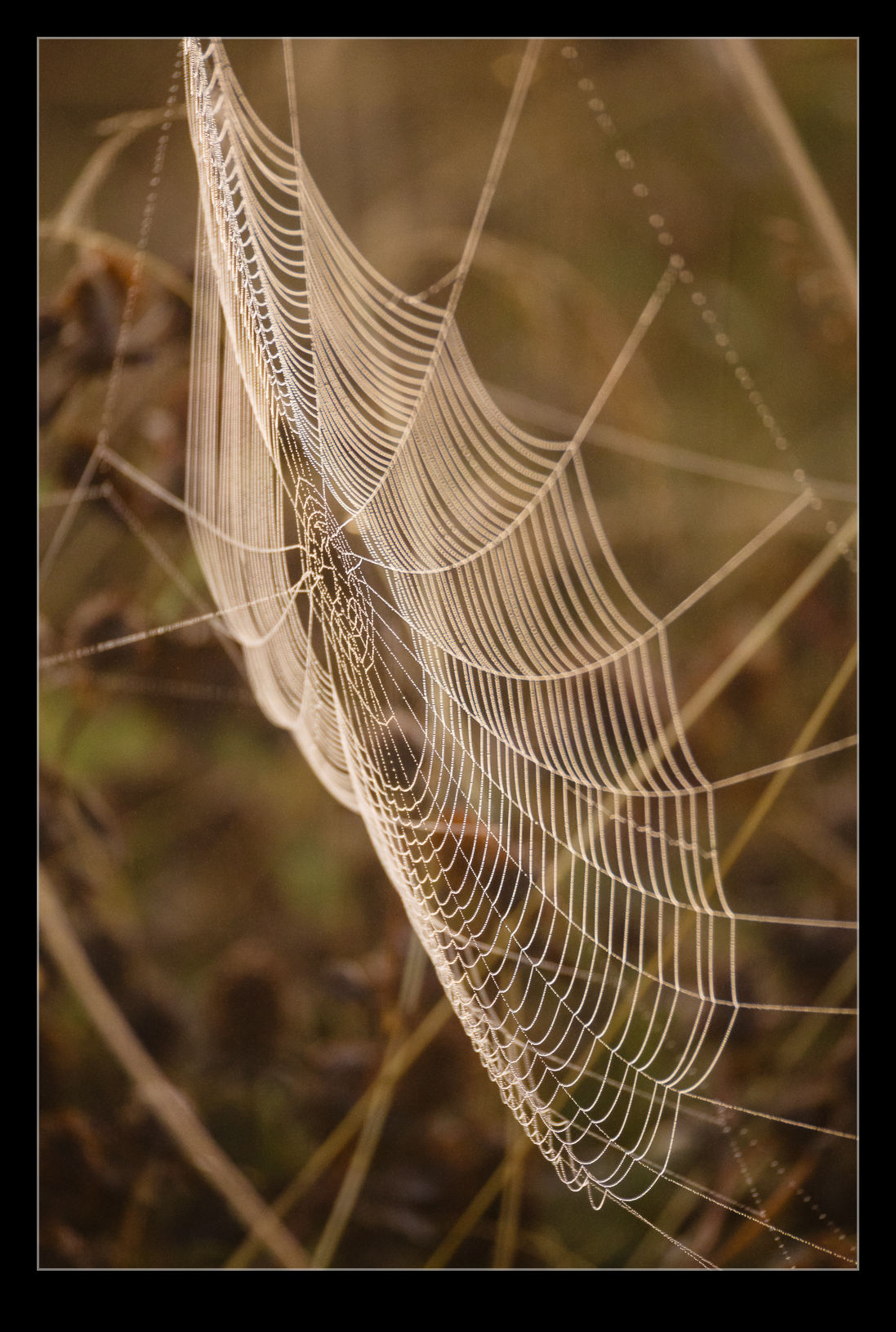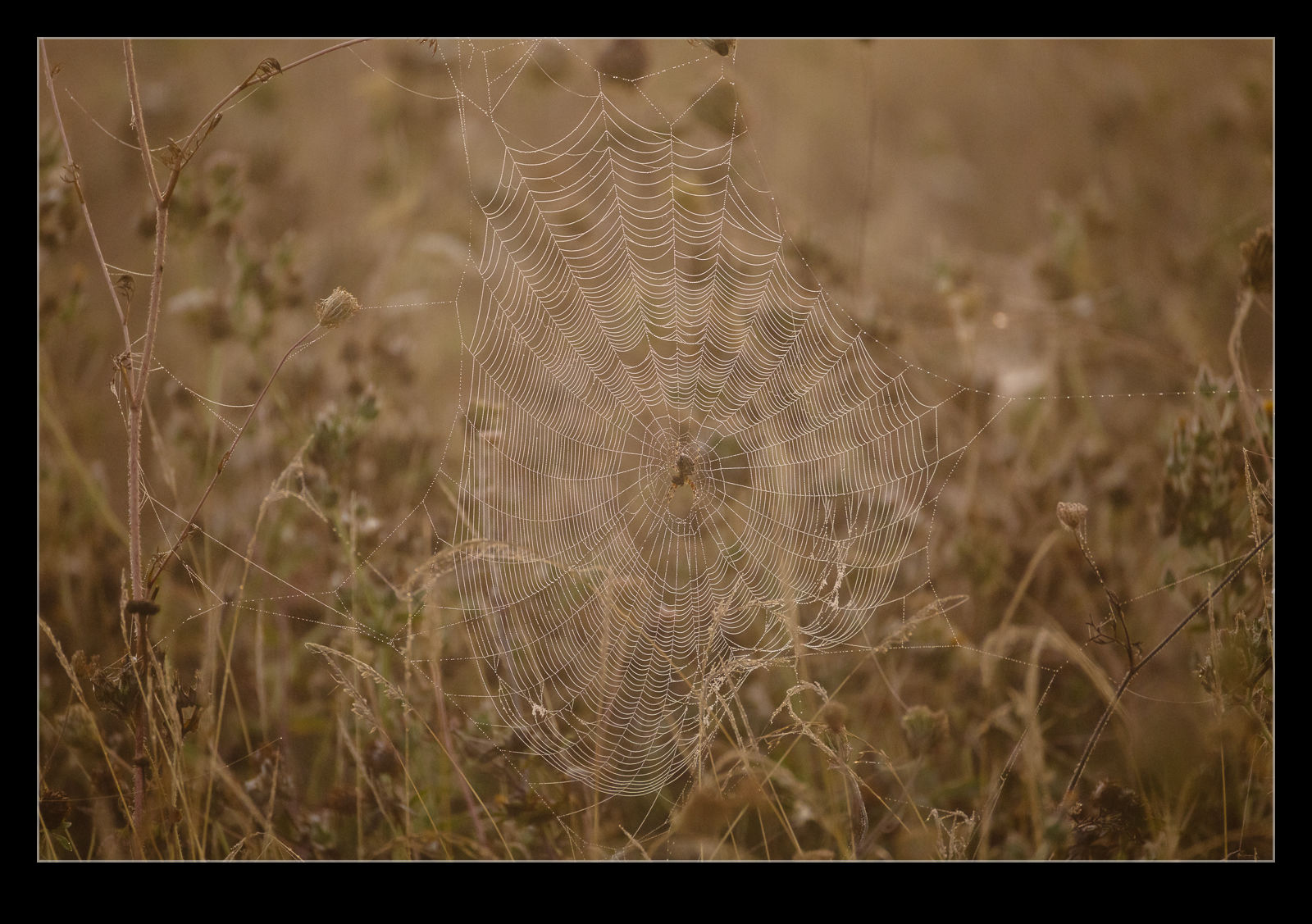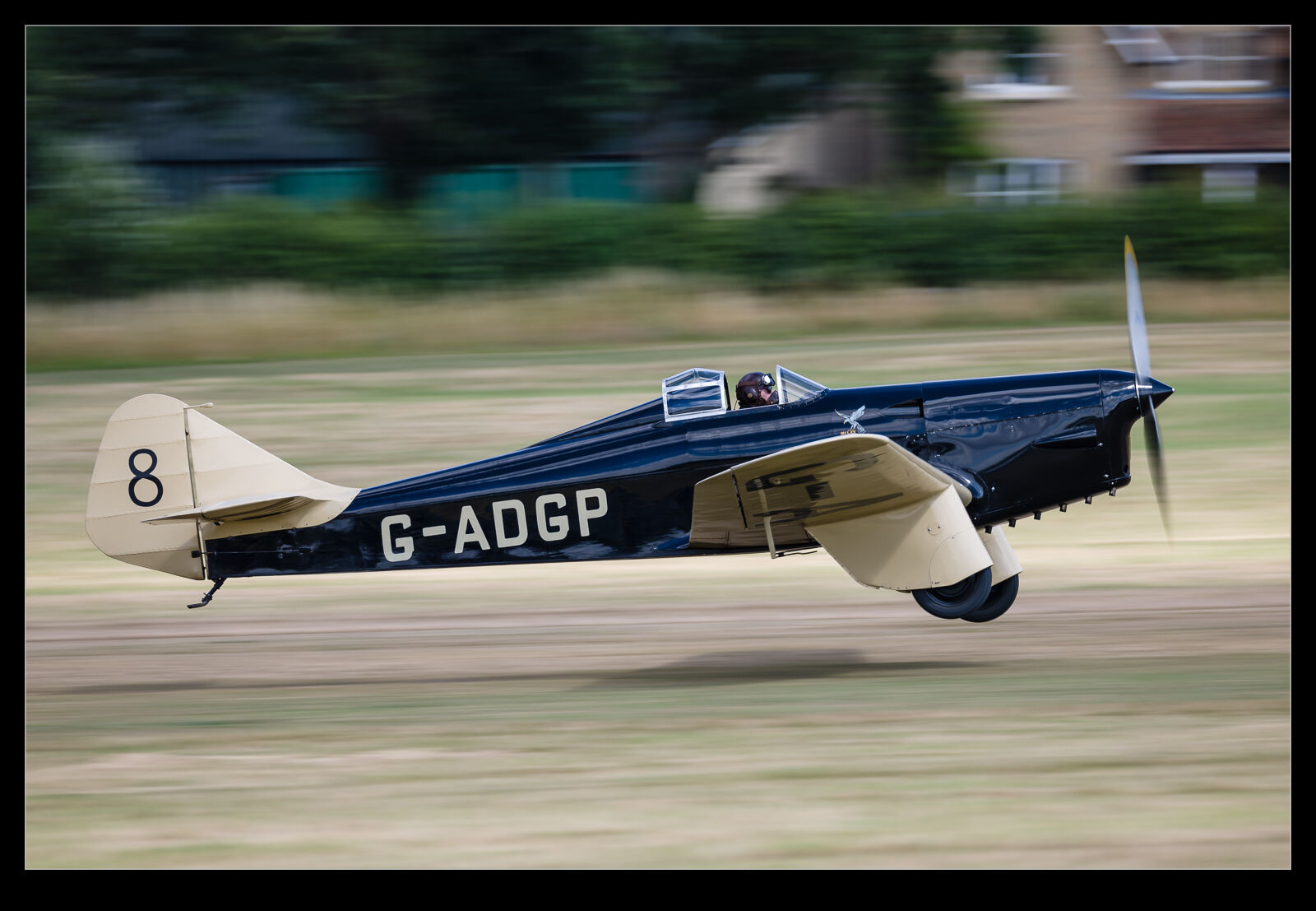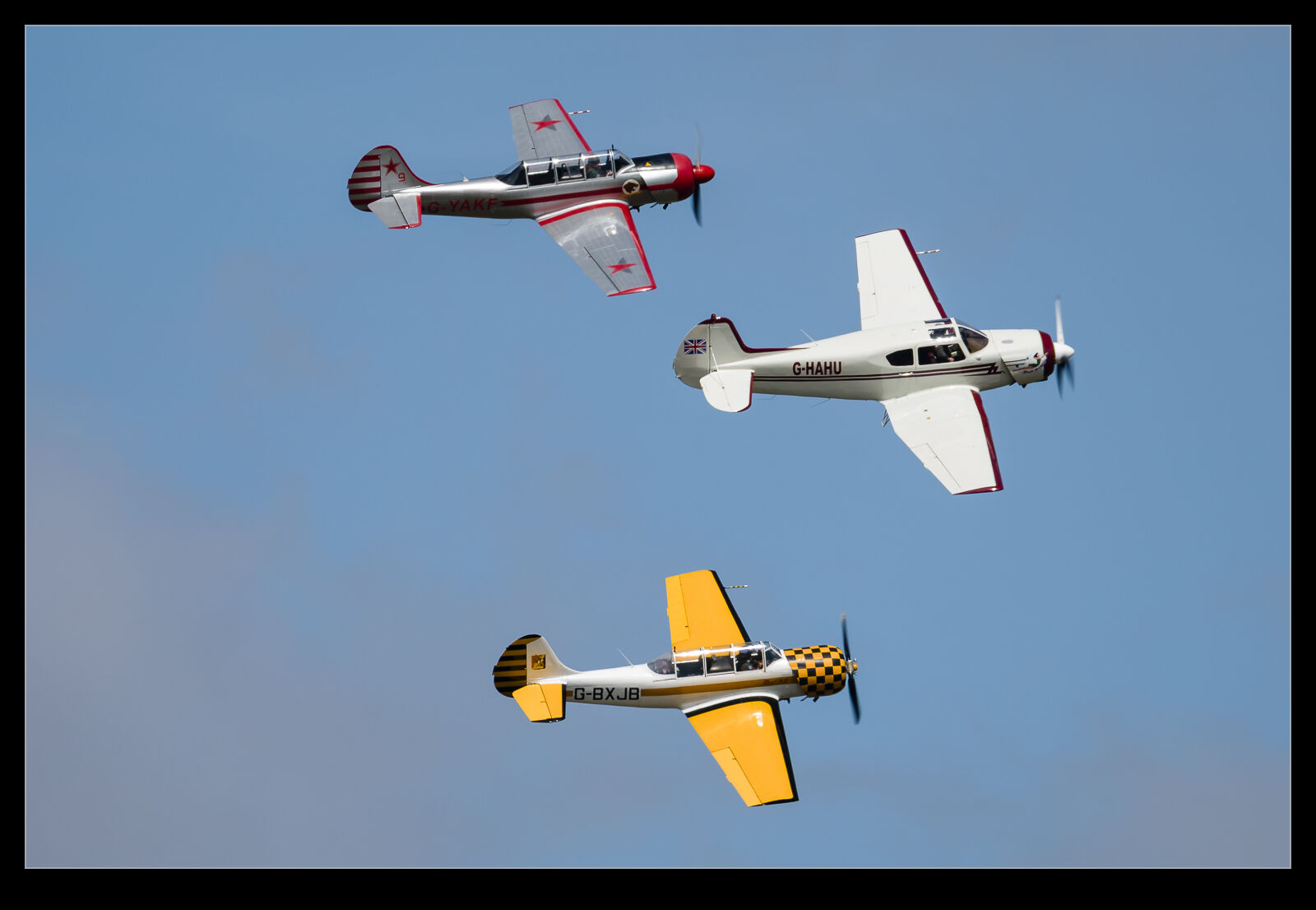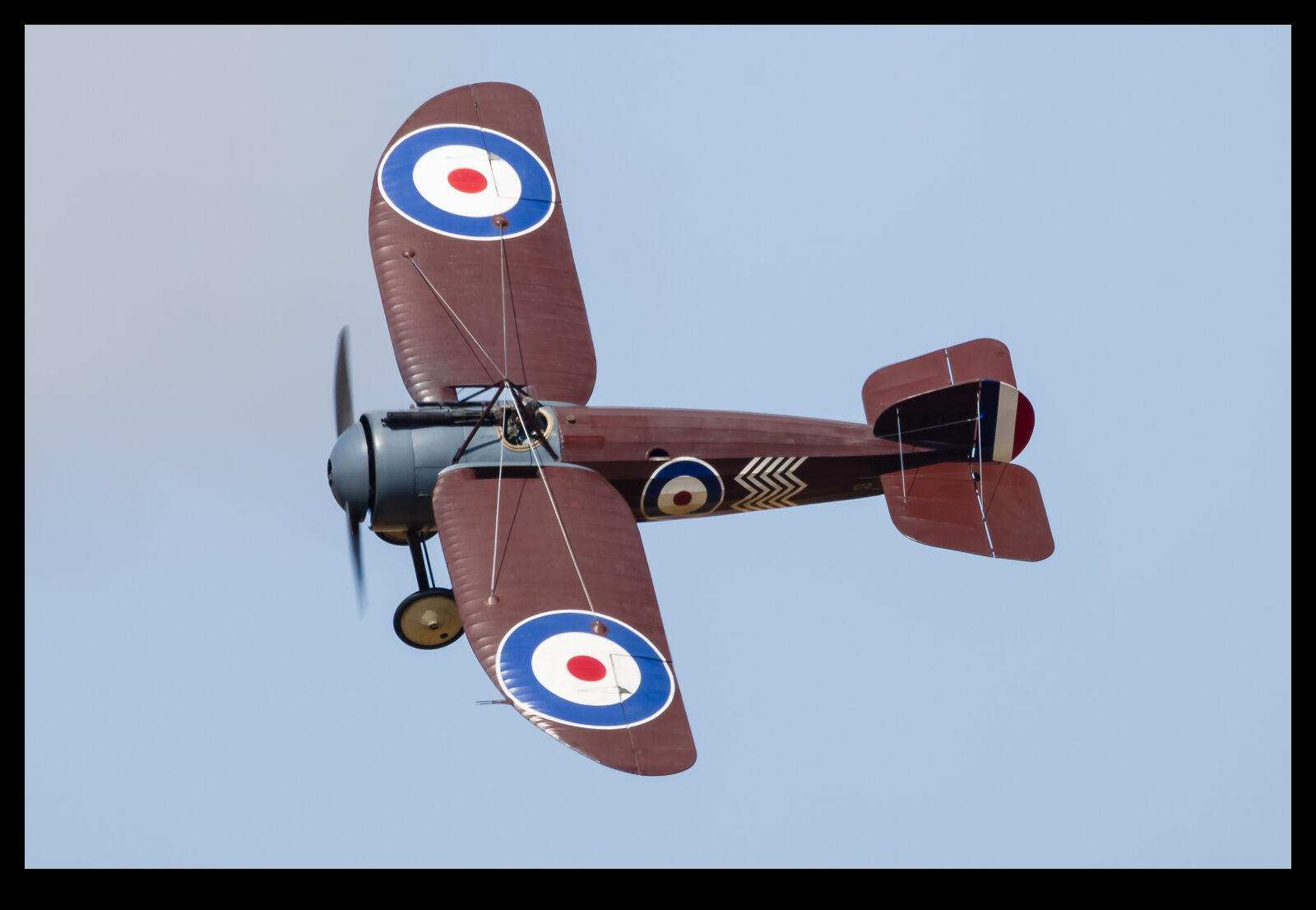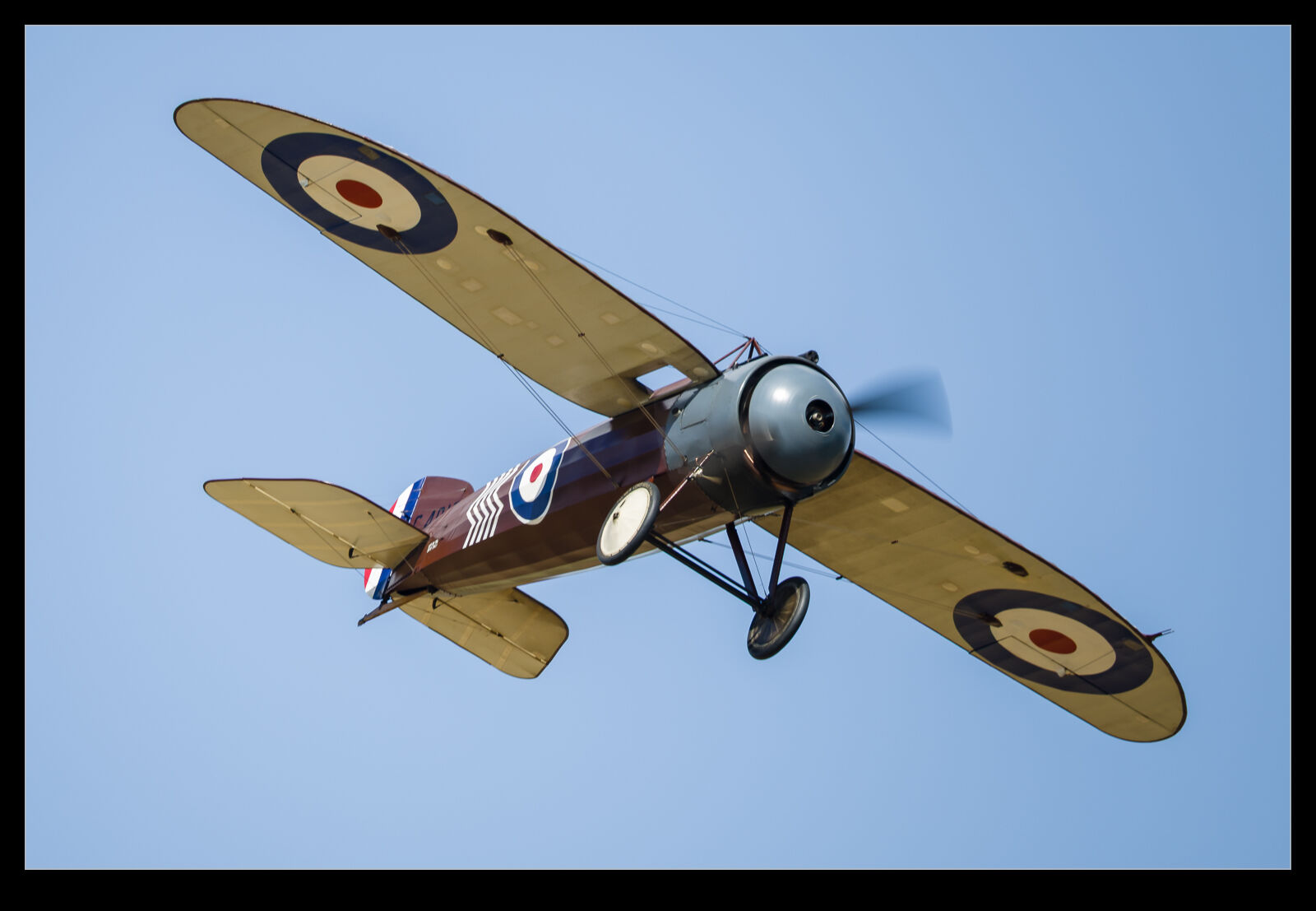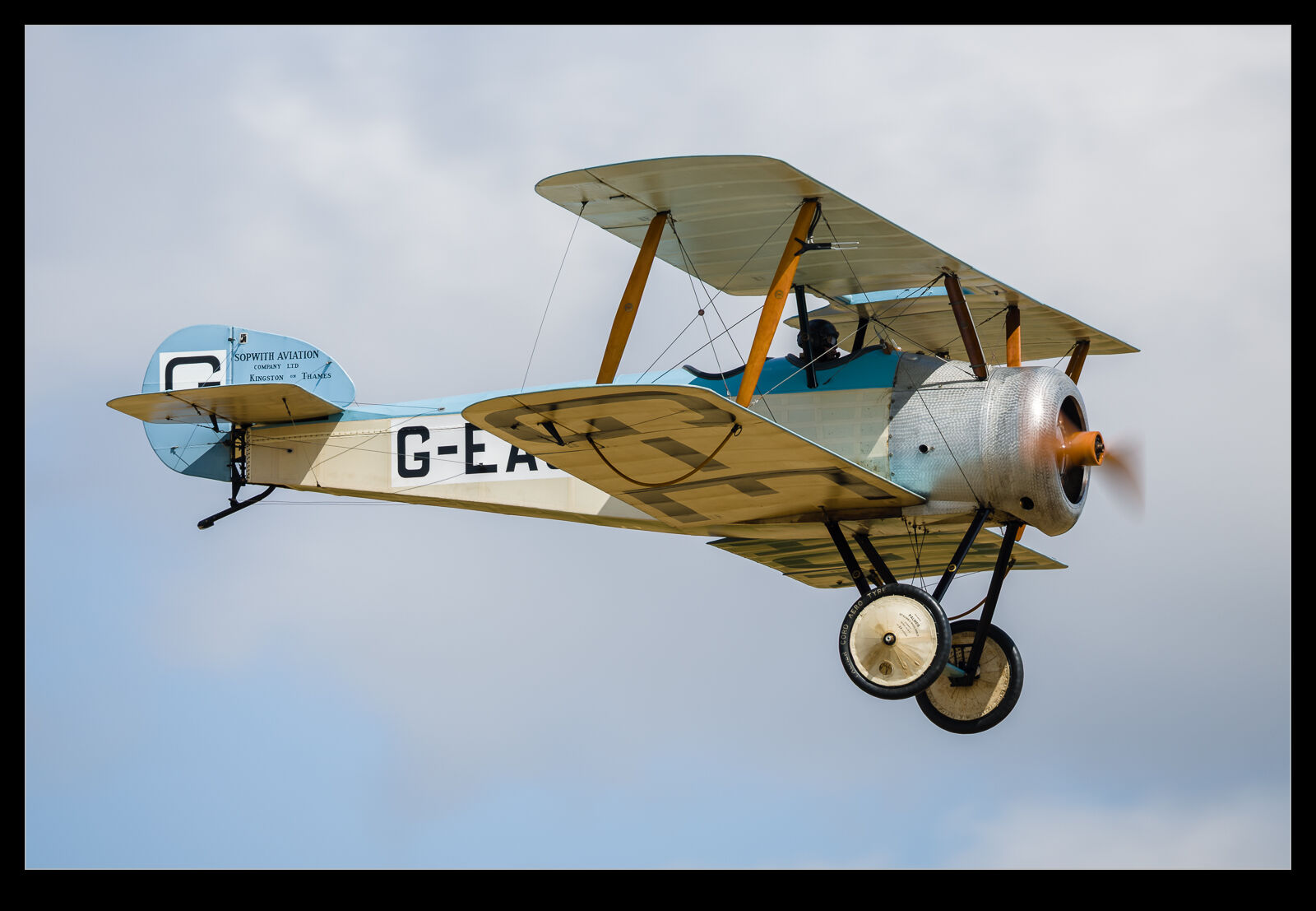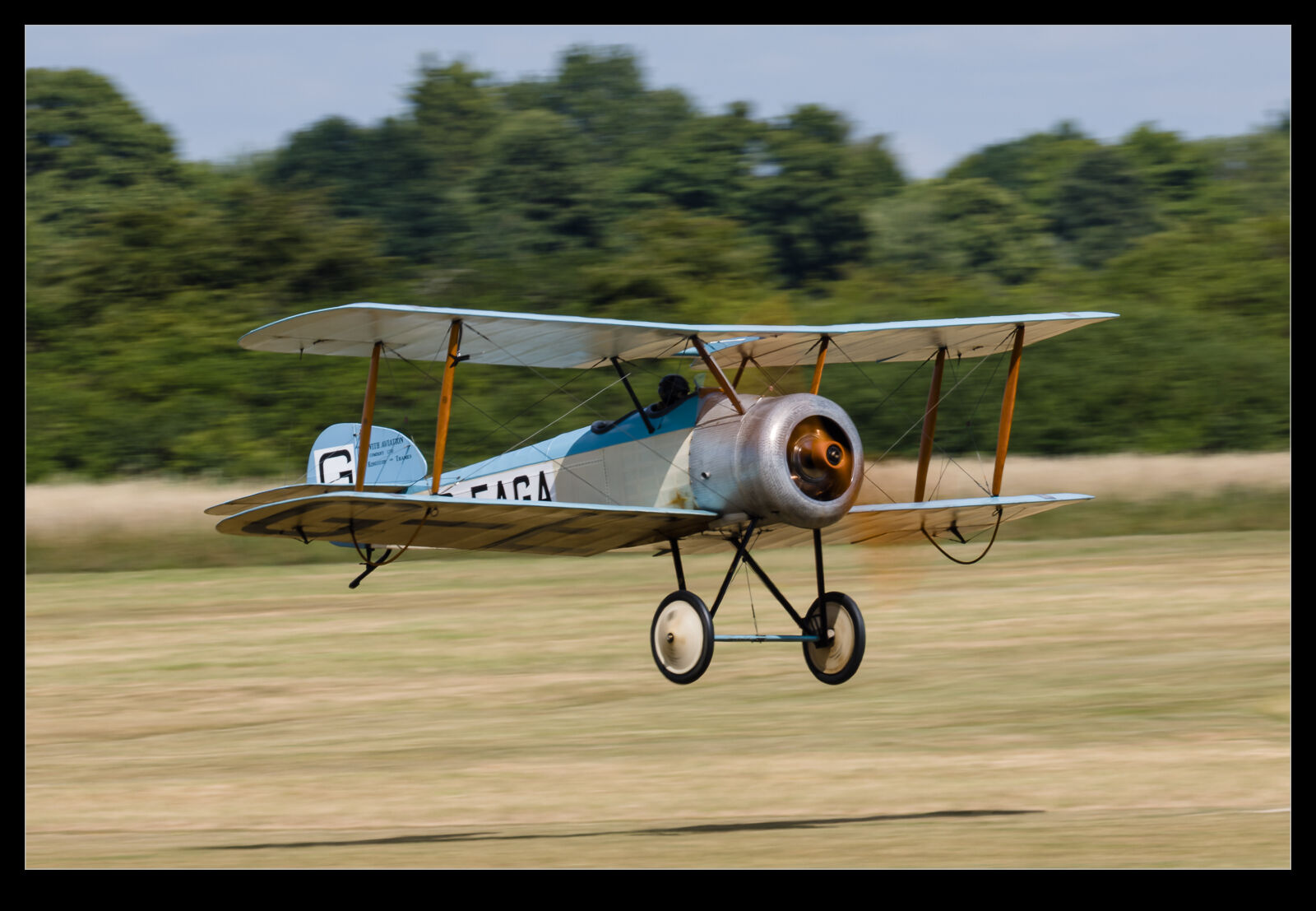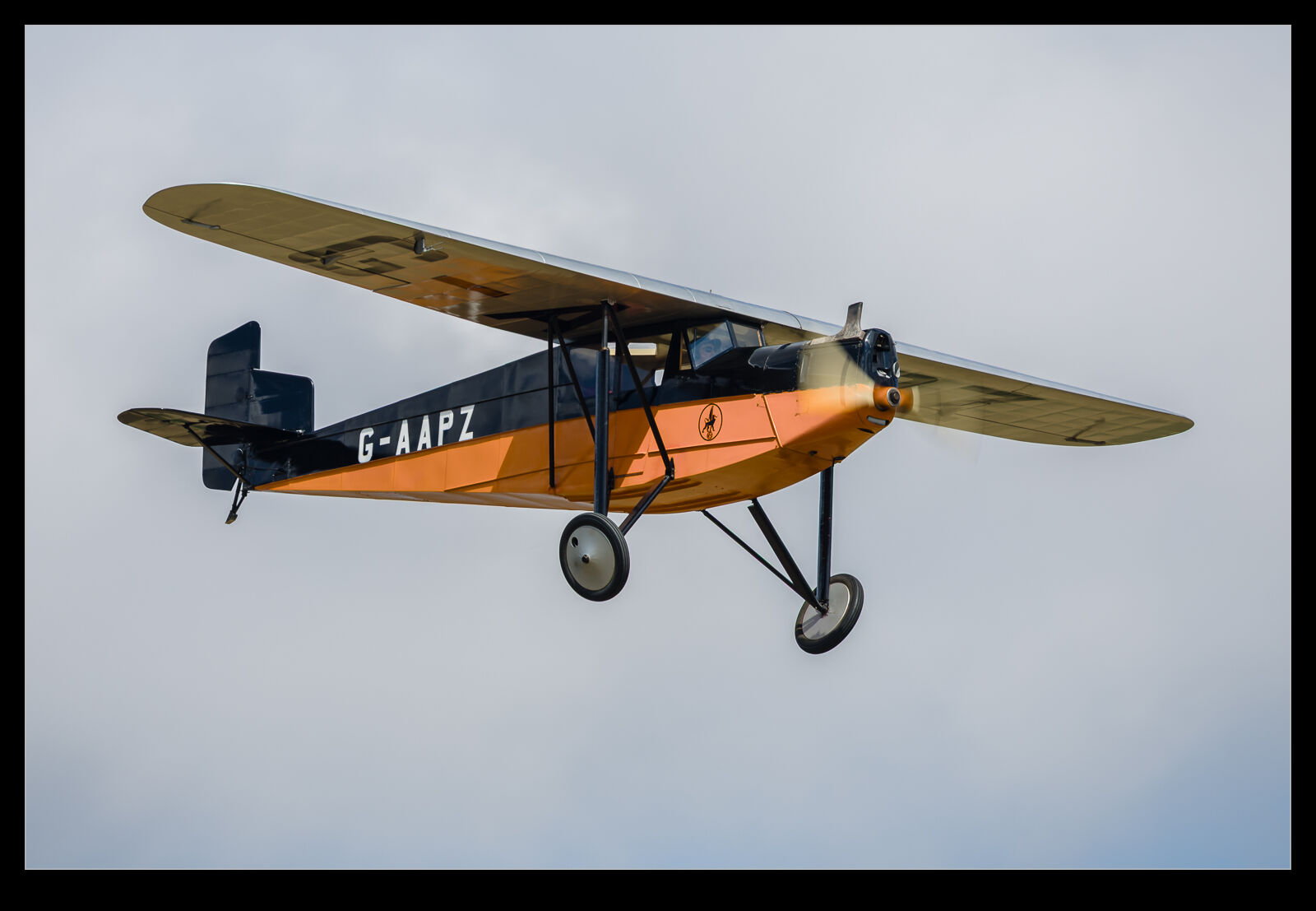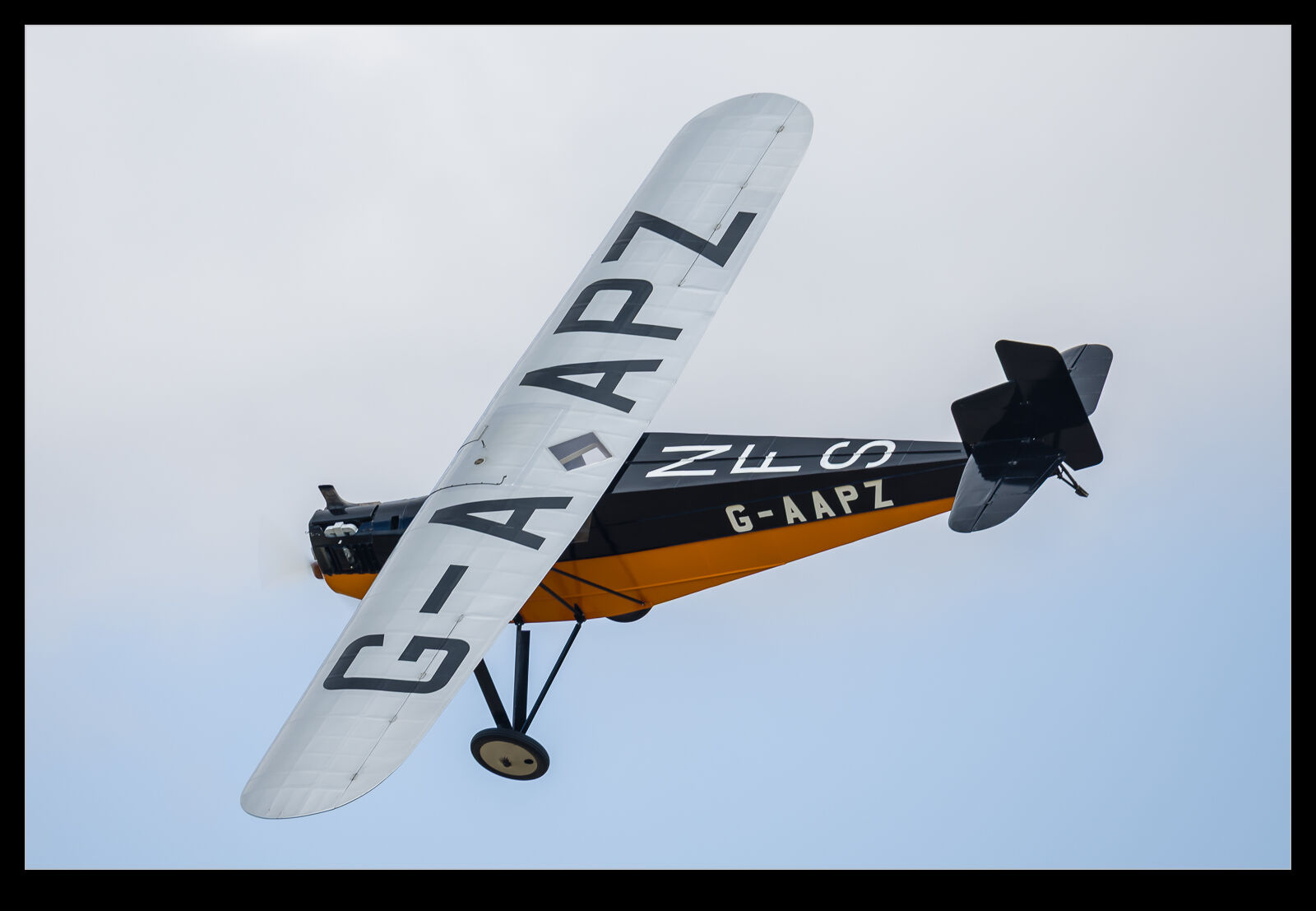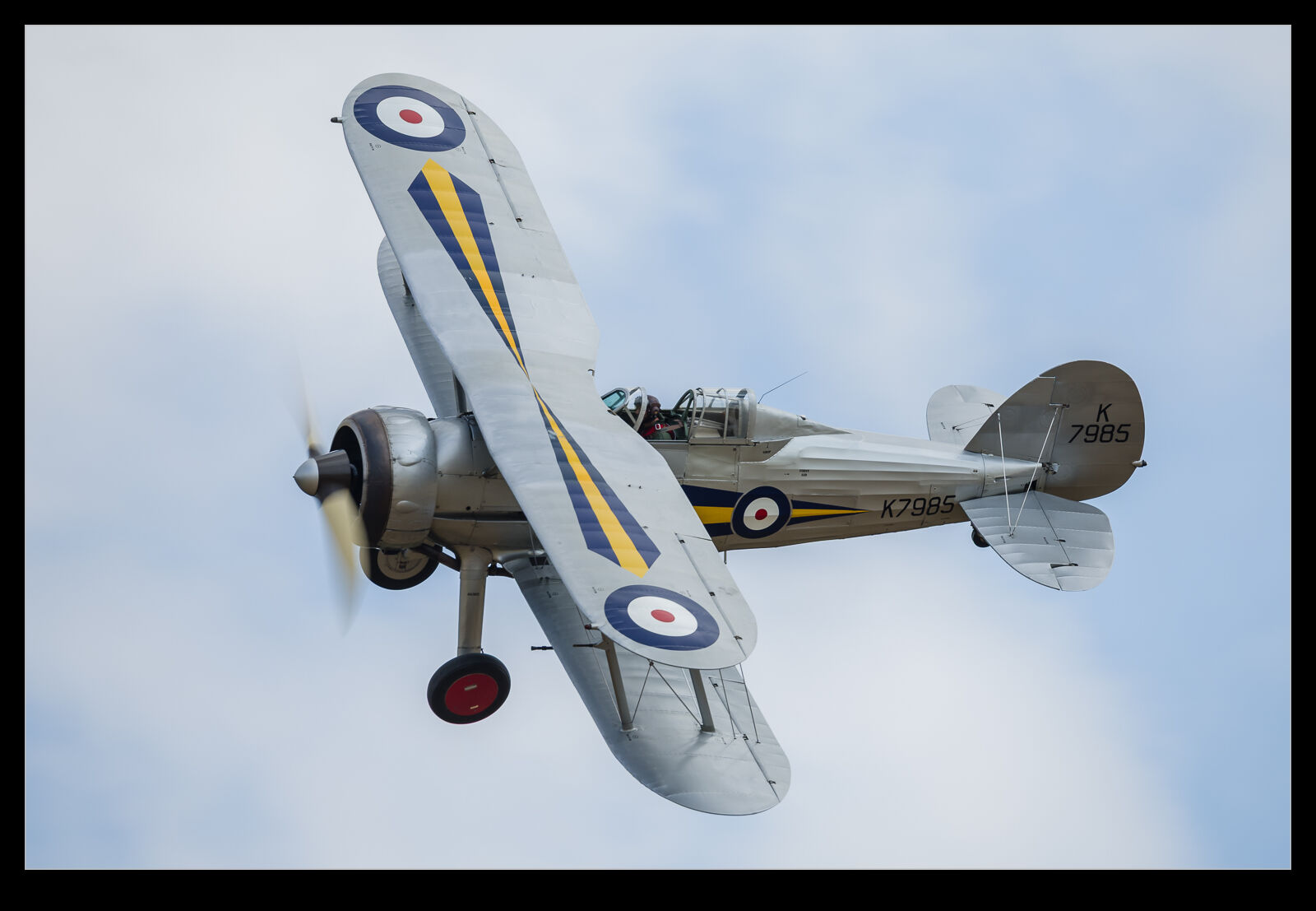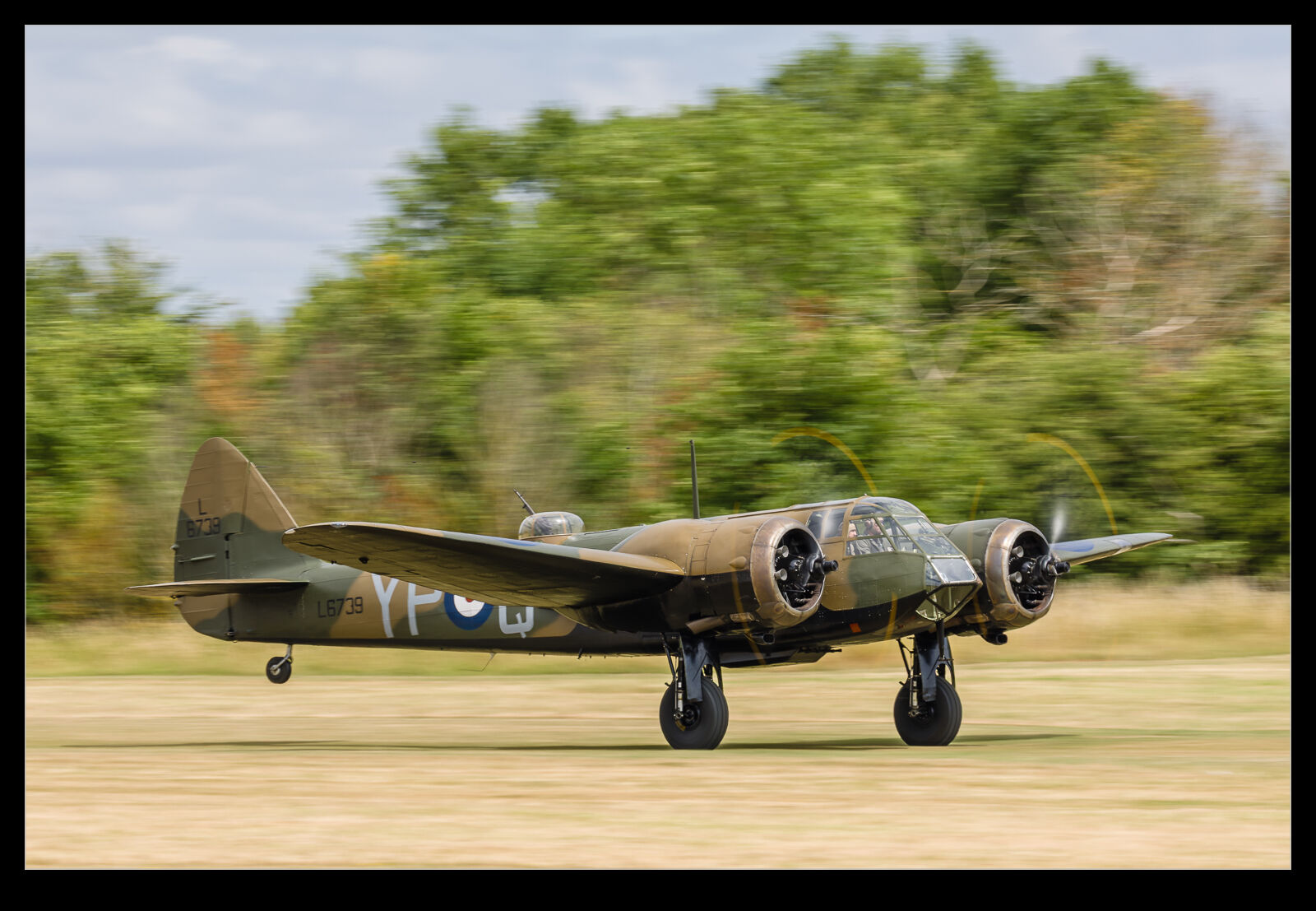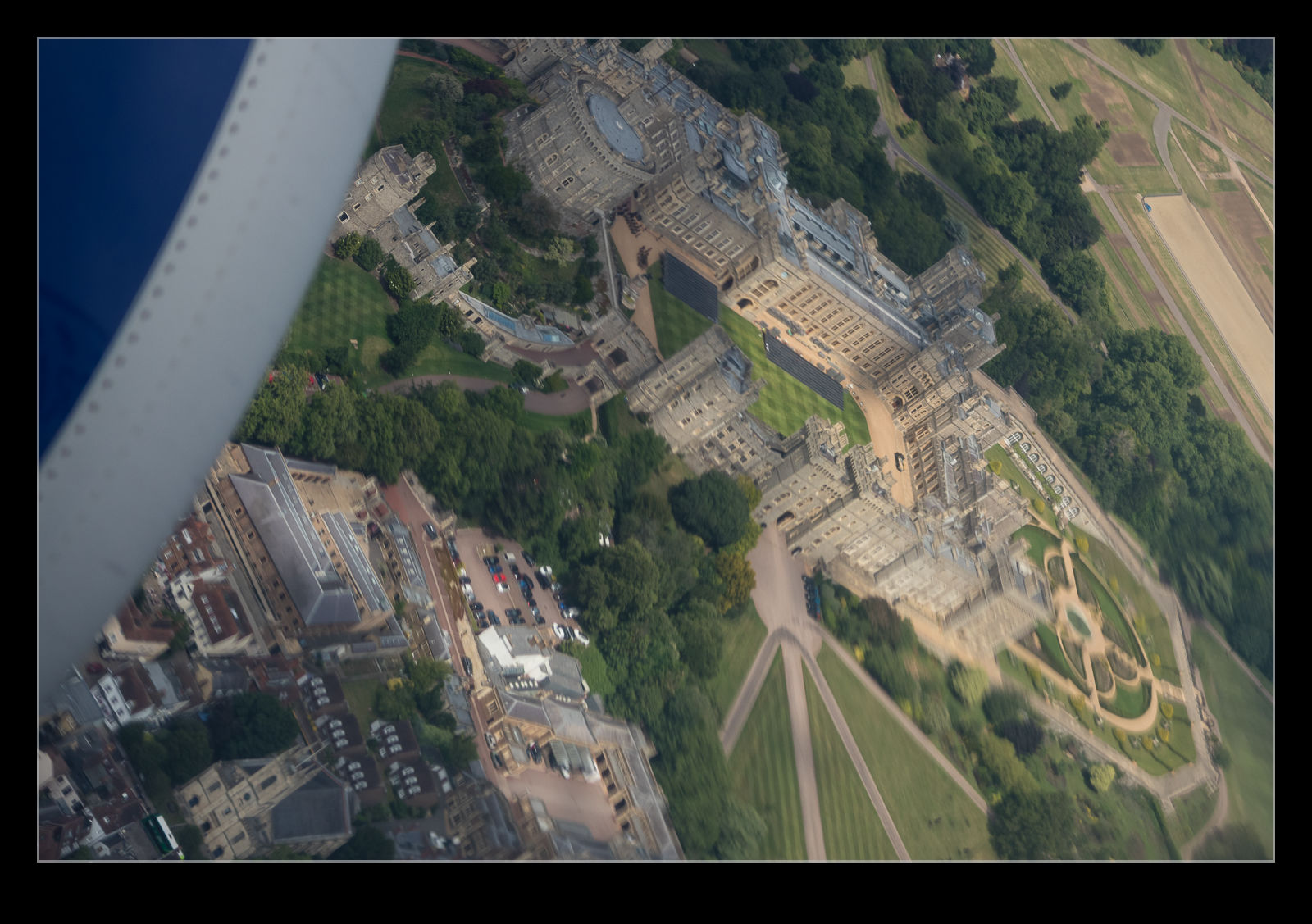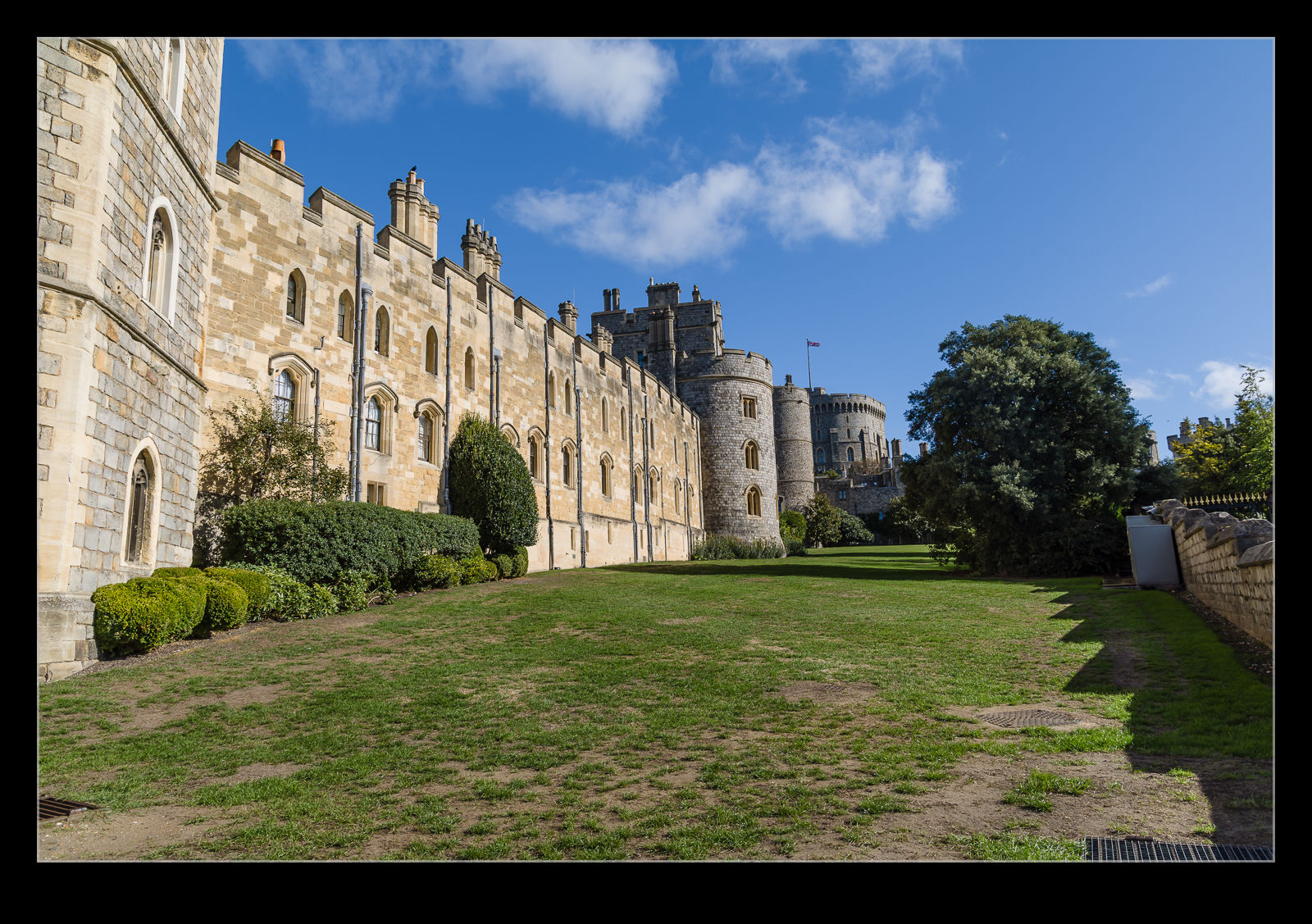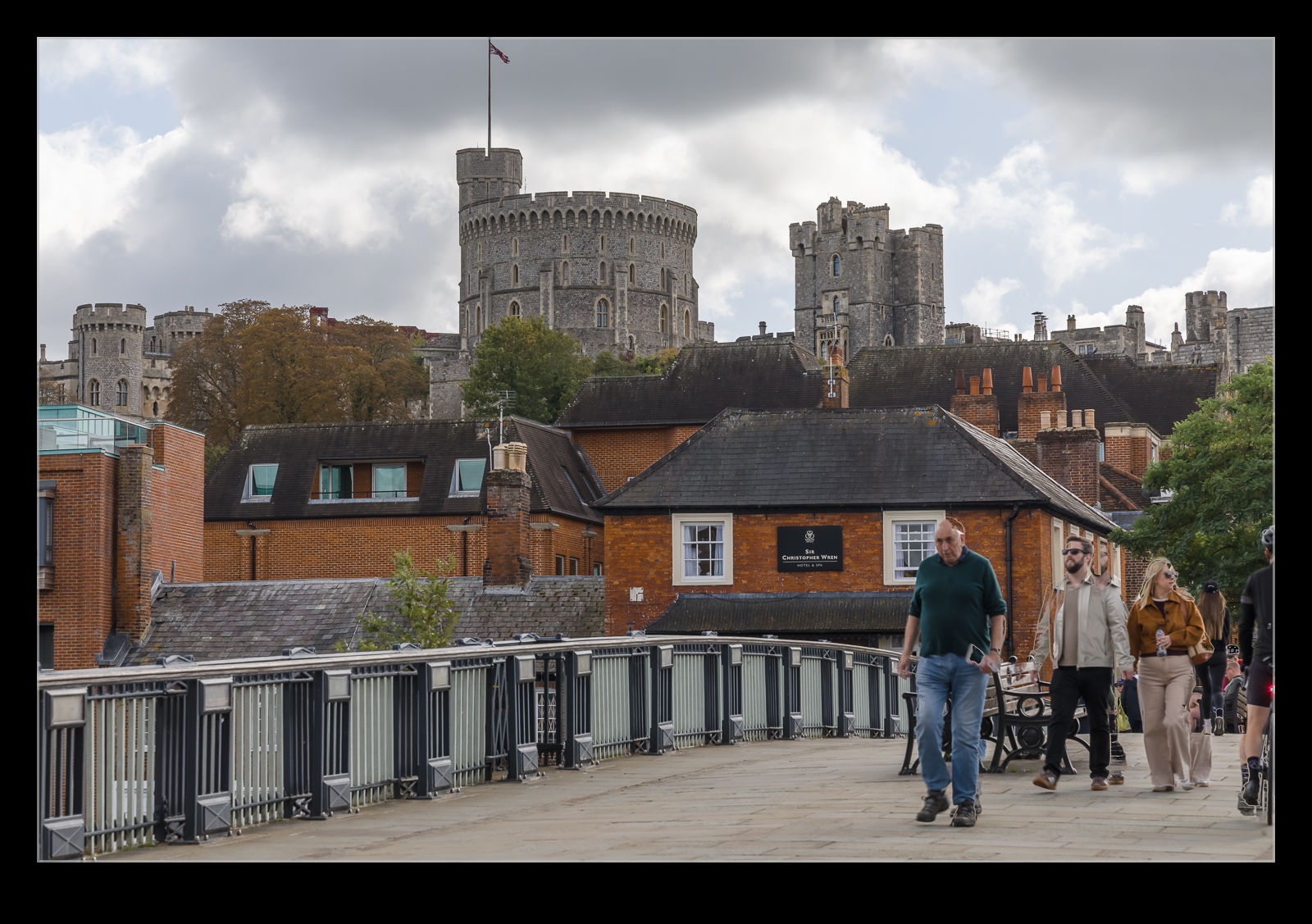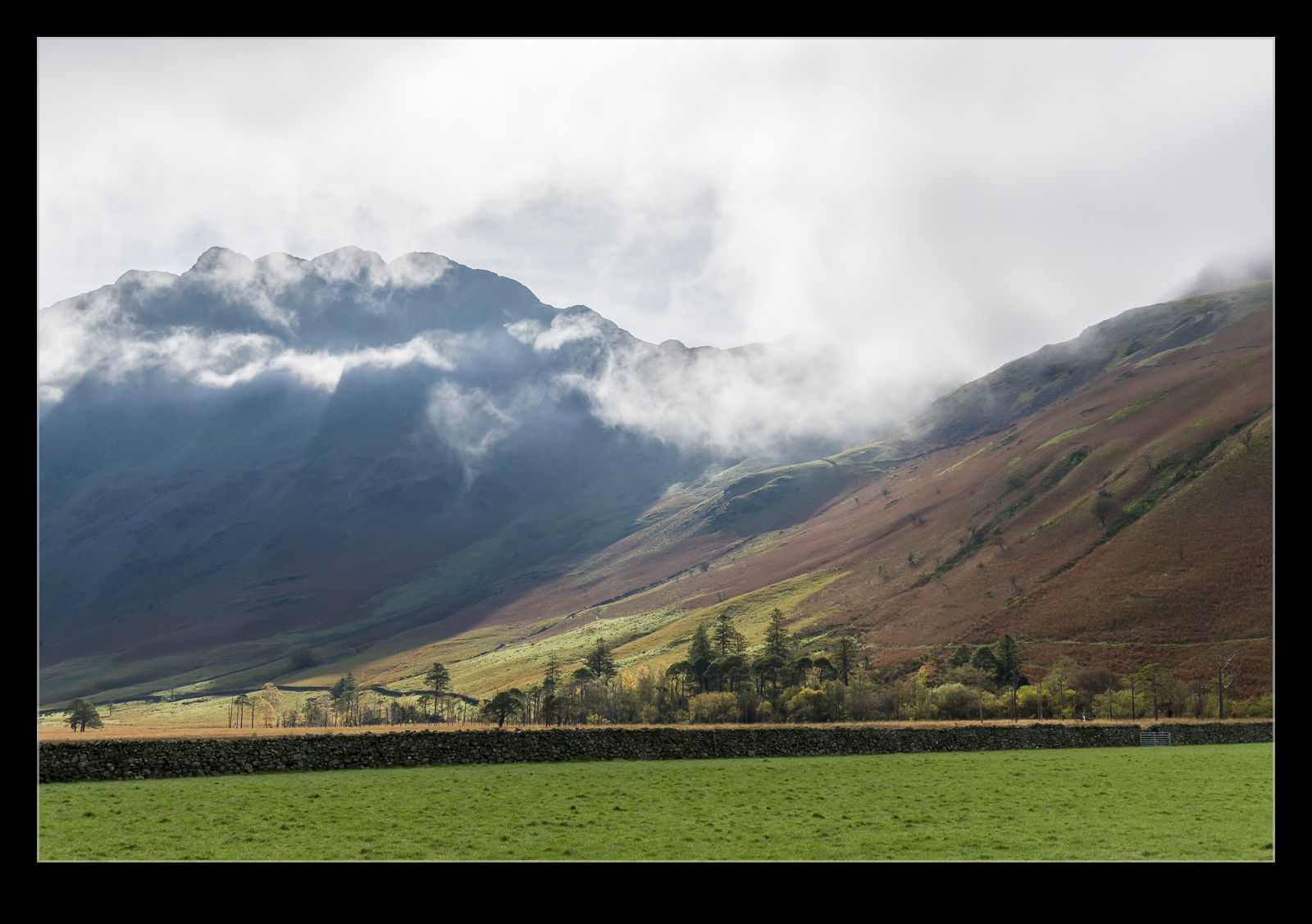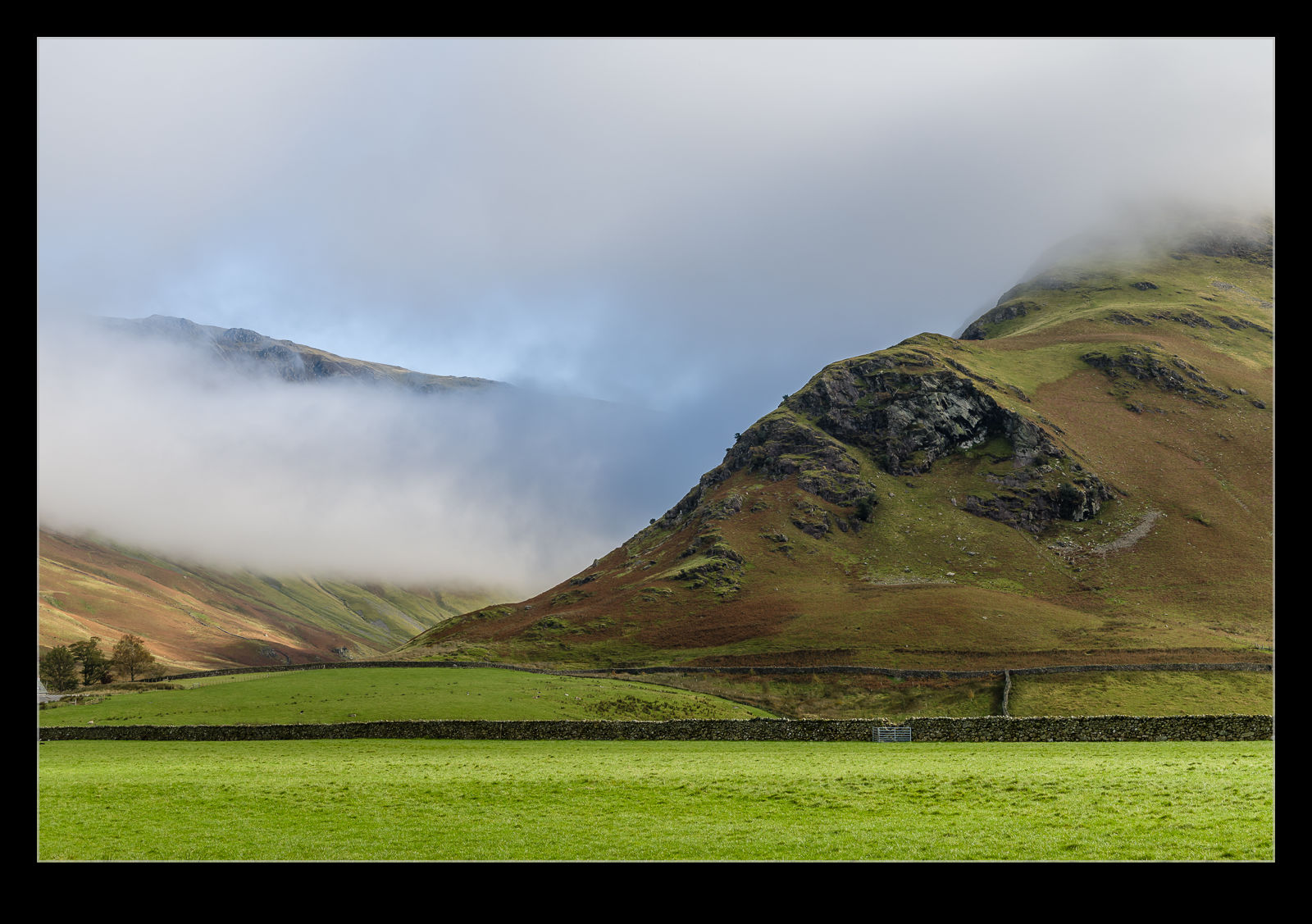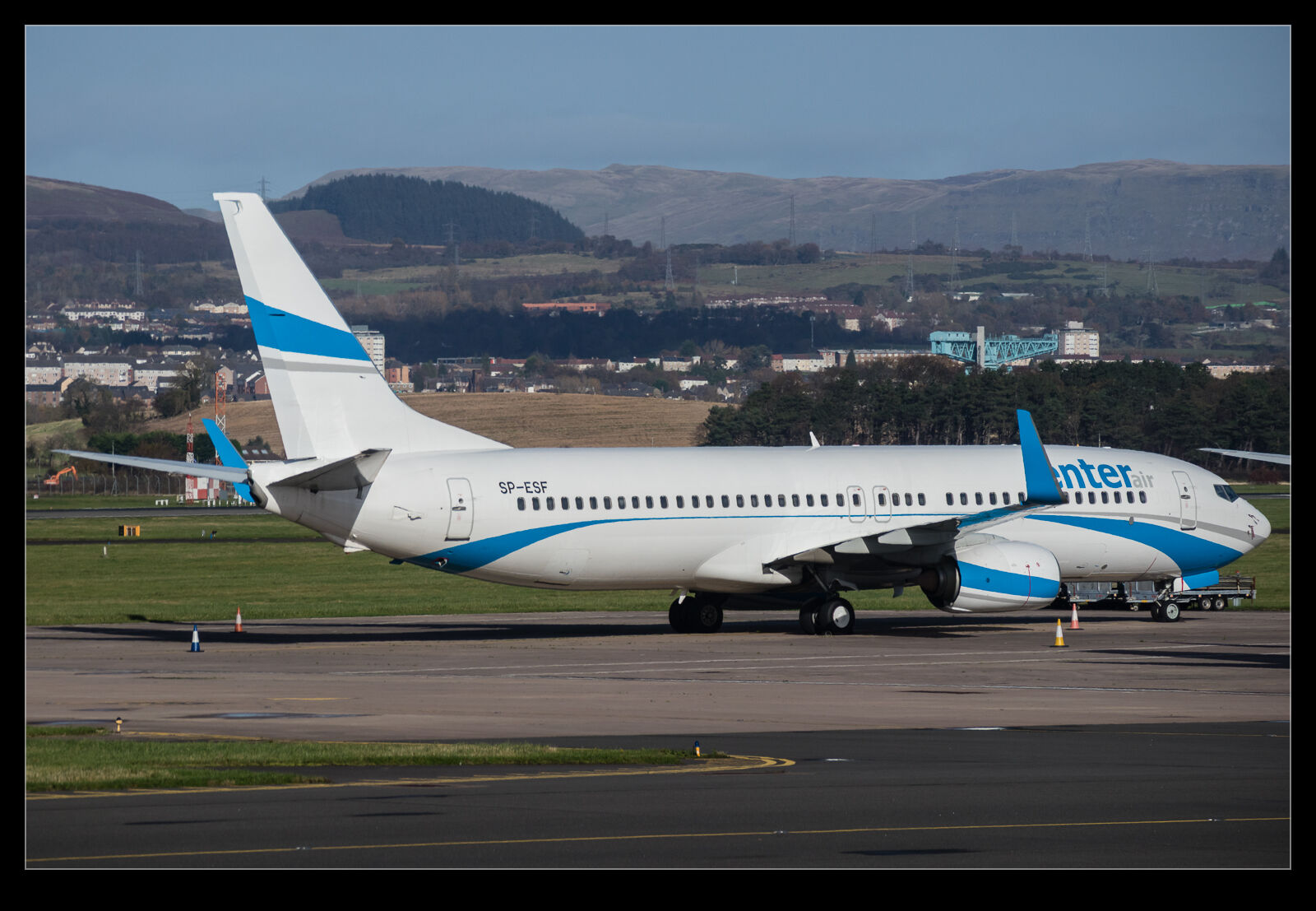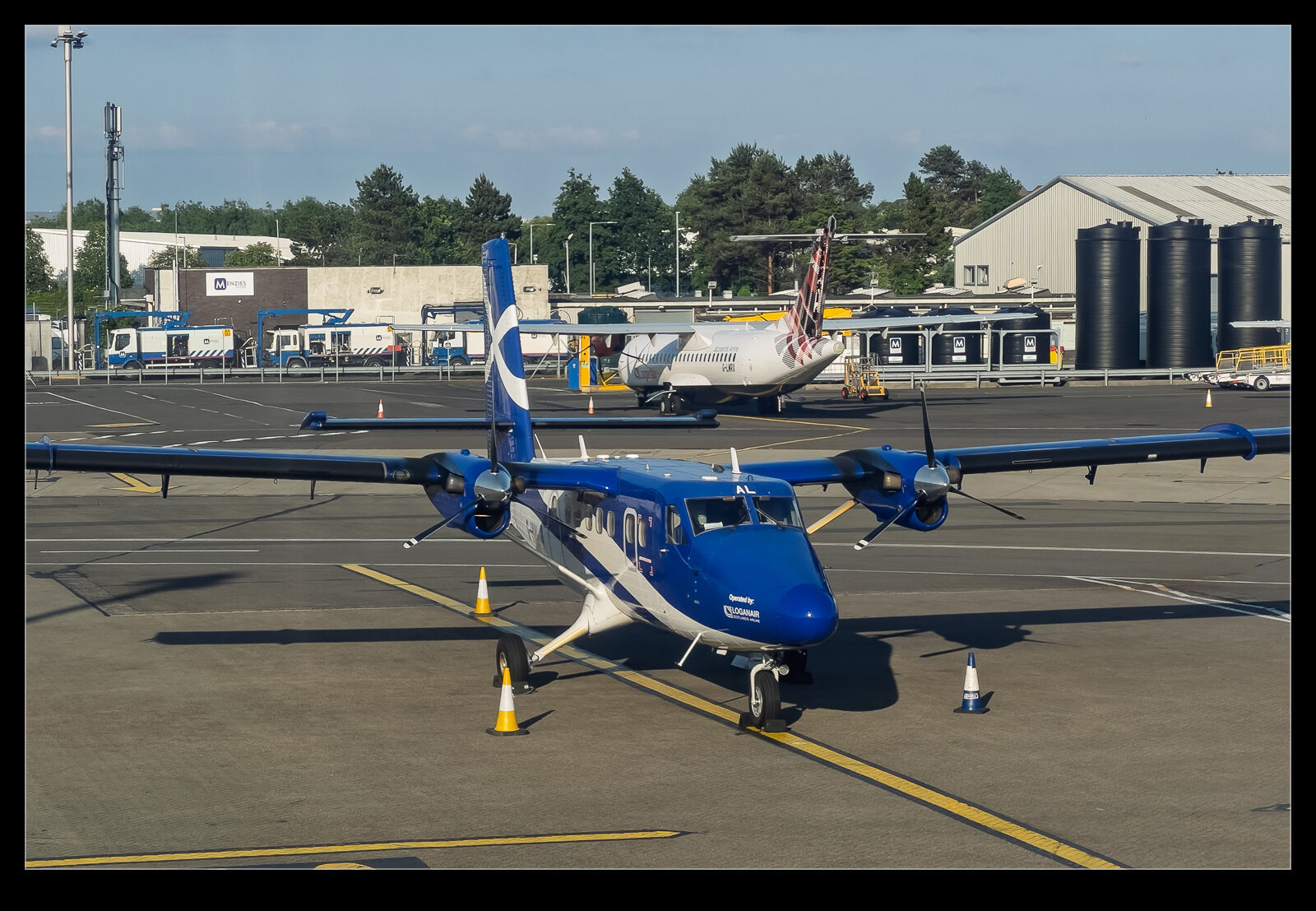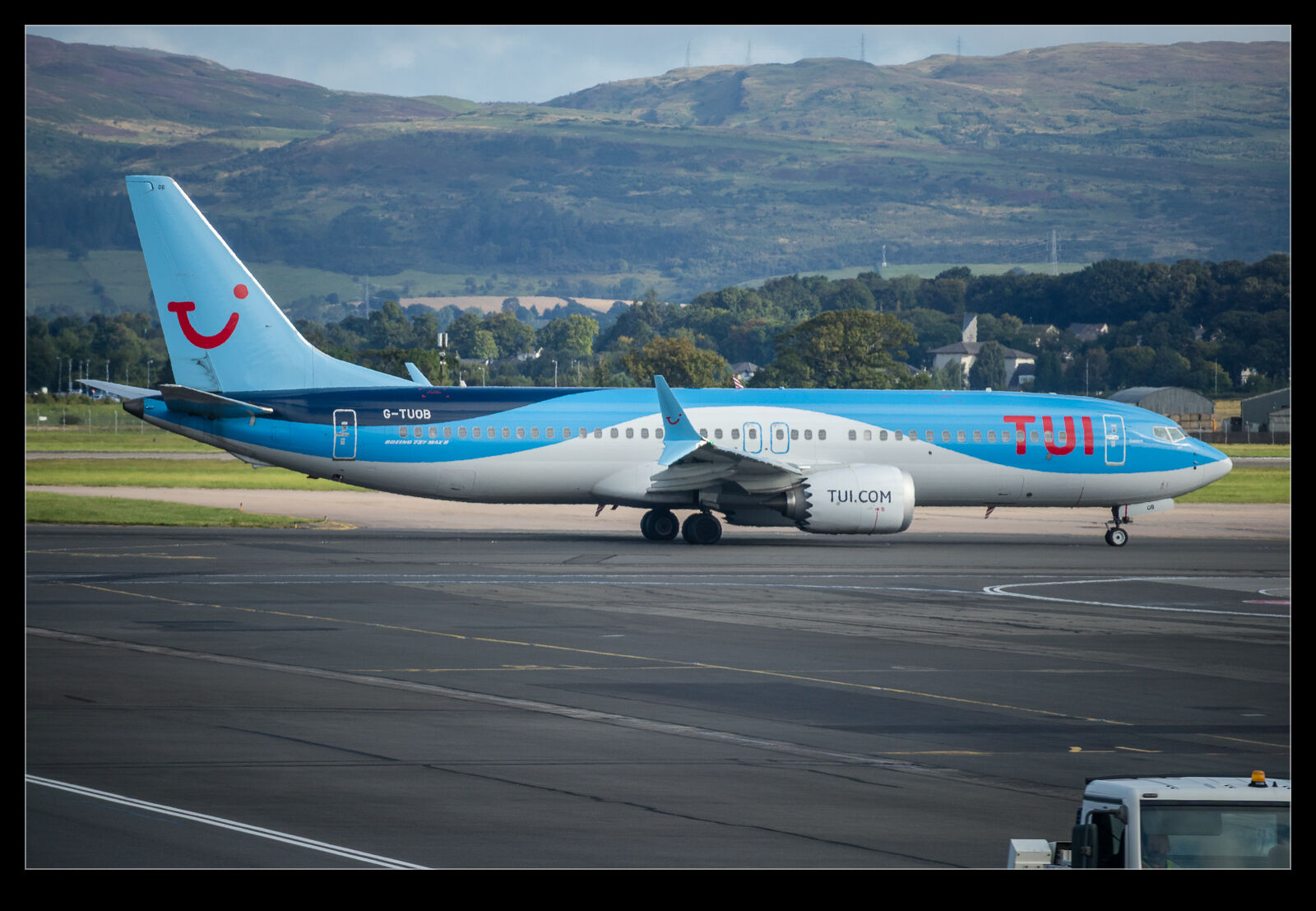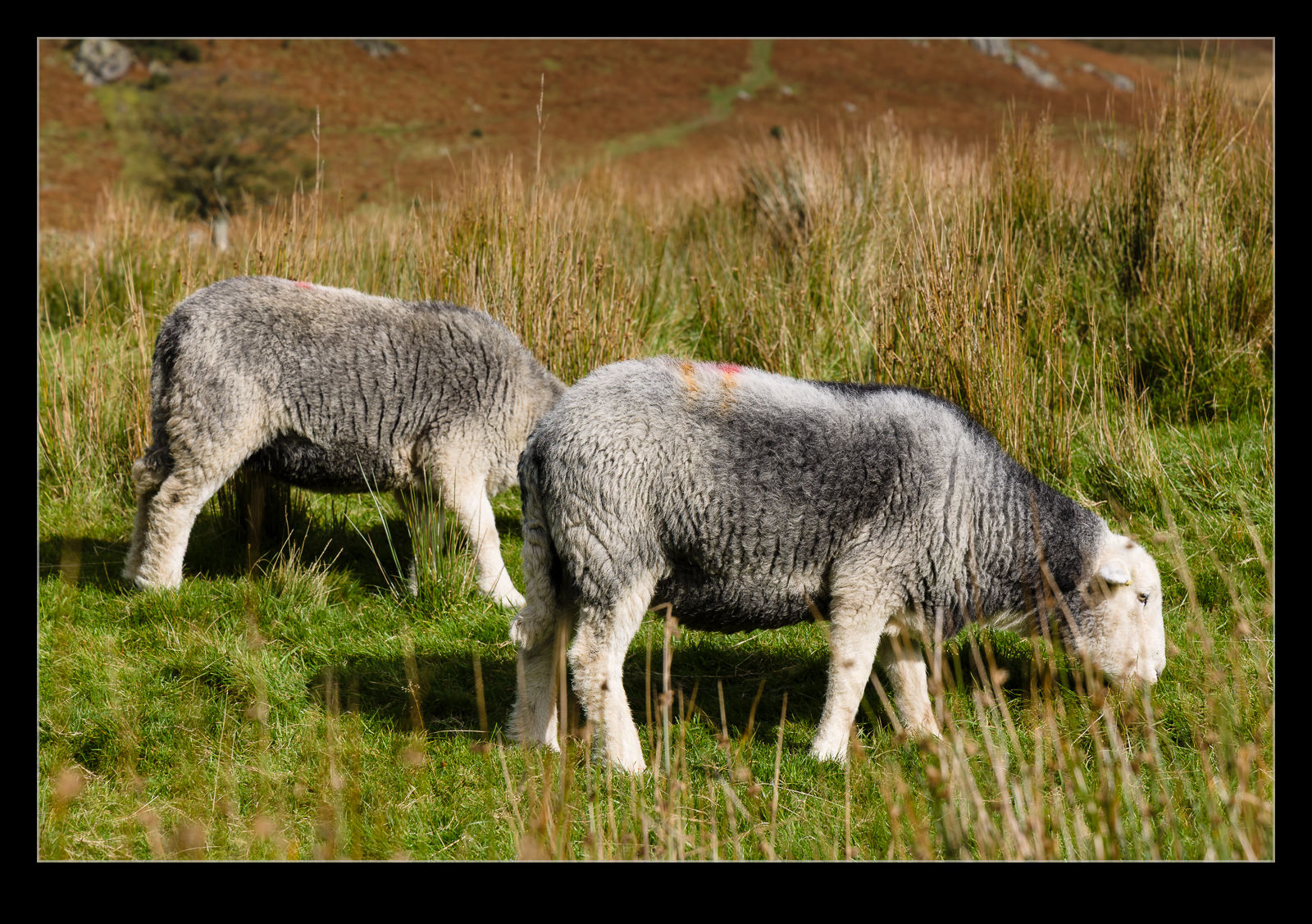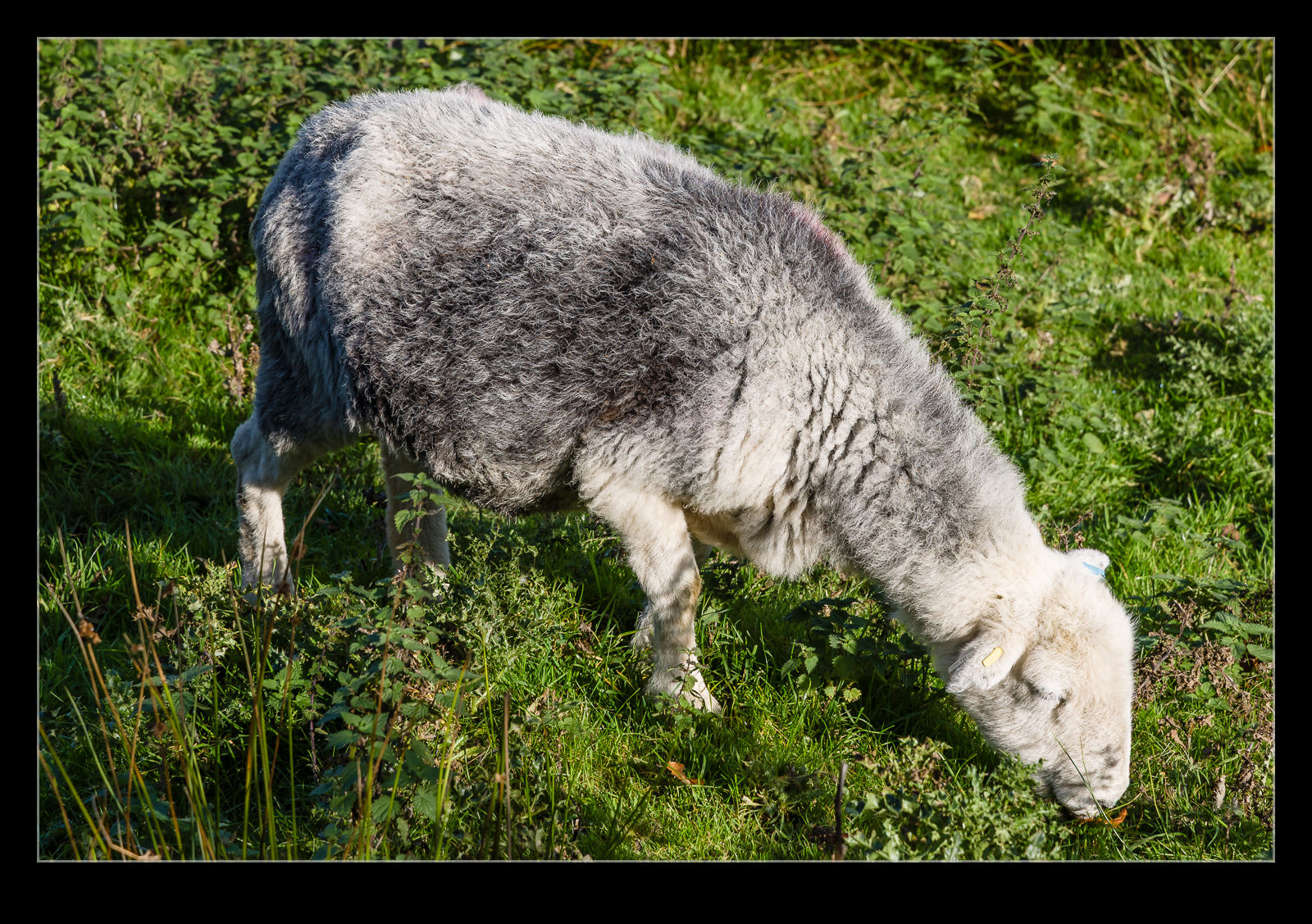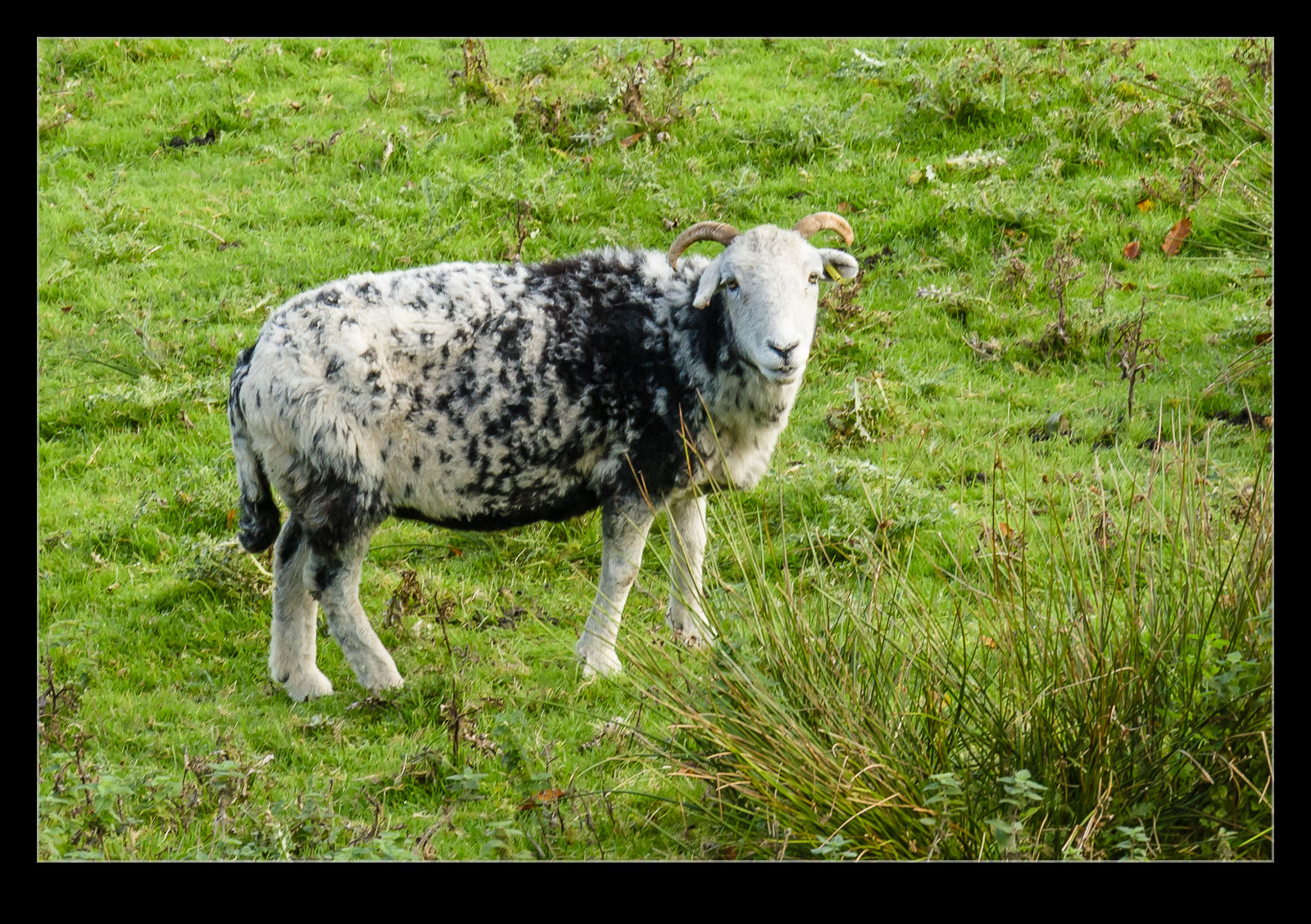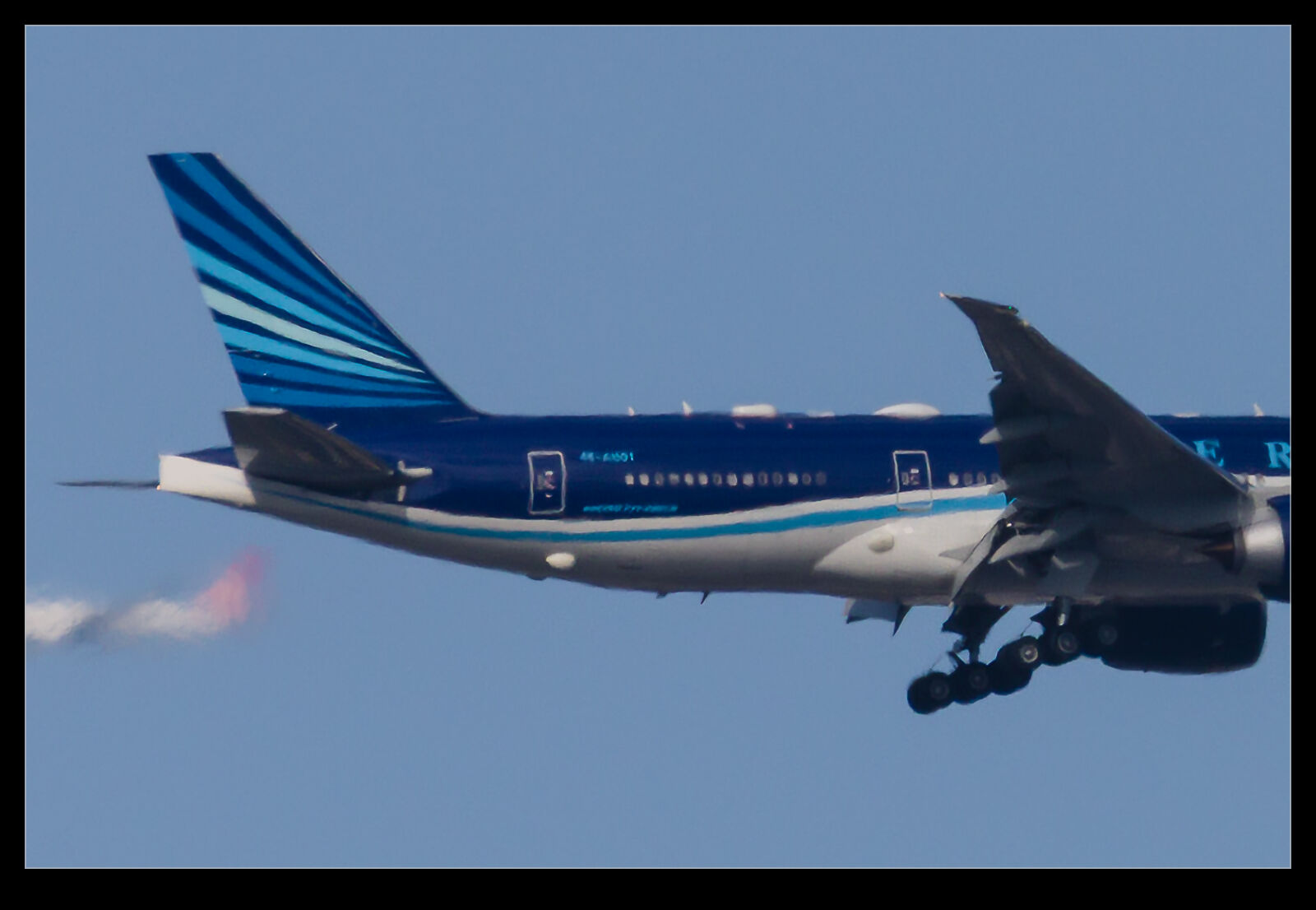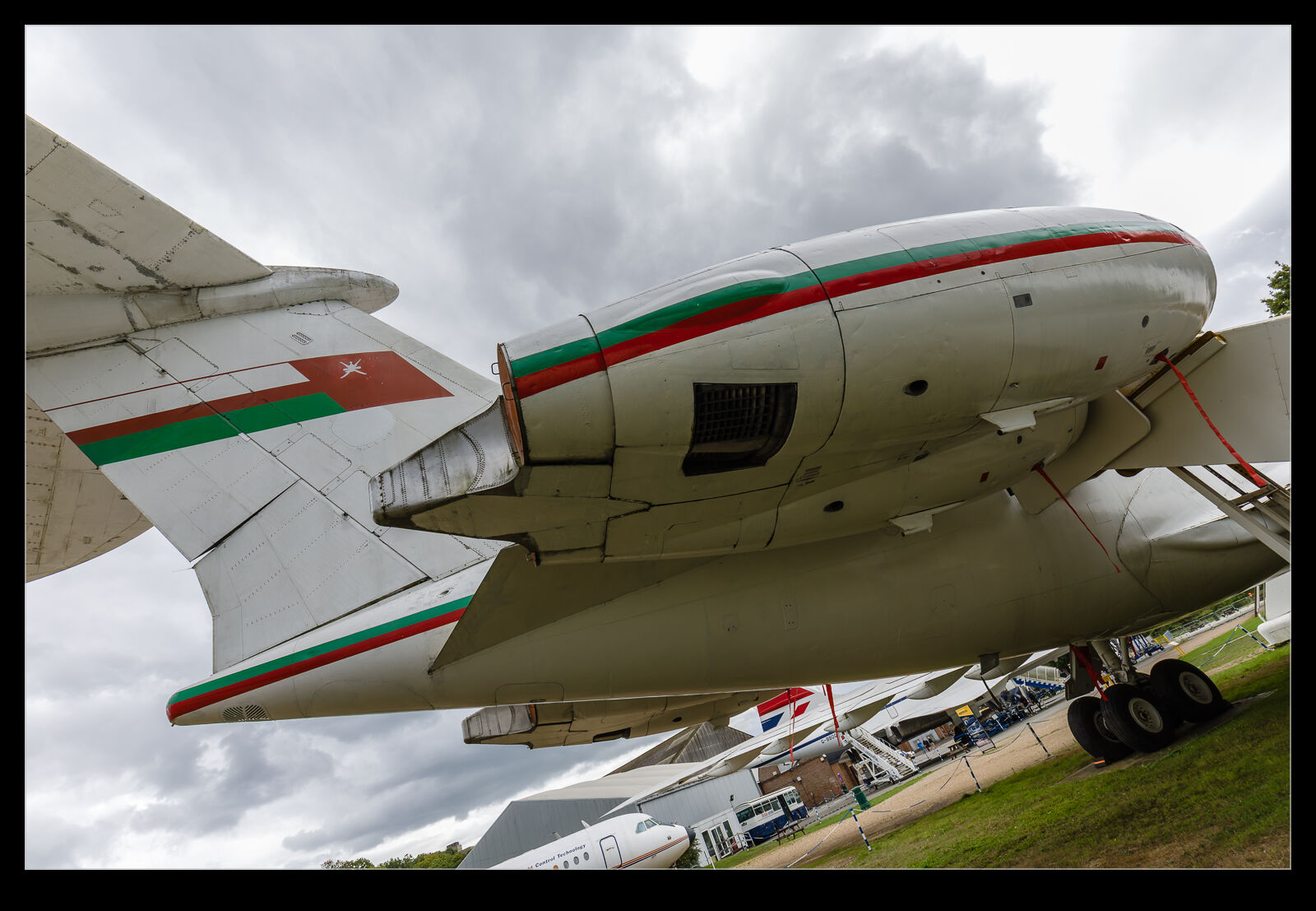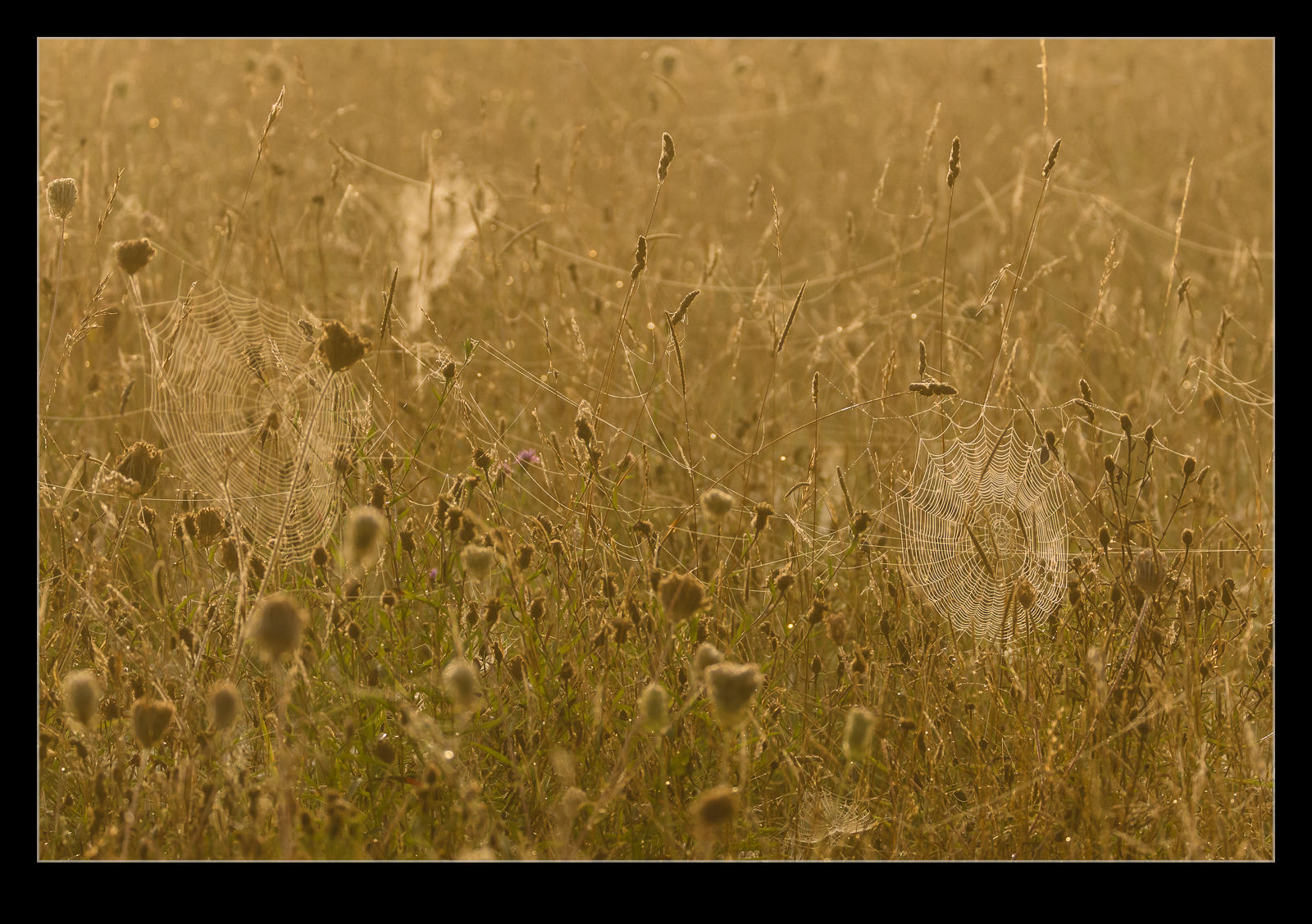 The morning strolls around the nature reserve near our house can include some lovely conditions. One morning, the dew had collected on the various spider webs in the grass, and they looked lovely while backlit but the early sun. Couldn’t resist taking a few shots of them. The wider view didn’t make for an interesting shot but if you were there, you could see just how many webs there were across the field.
The morning strolls around the nature reserve near our house can include some lovely conditions. One morning, the dew had collected on the various spider webs in the grass, and they looked lovely while backlit but the early sun. Couldn’t resist taking a few shots of them. The wider view didn’t make for an interesting shot but if you were there, you could see just how many webs there were across the field.
Festival of Flight Other Stuff
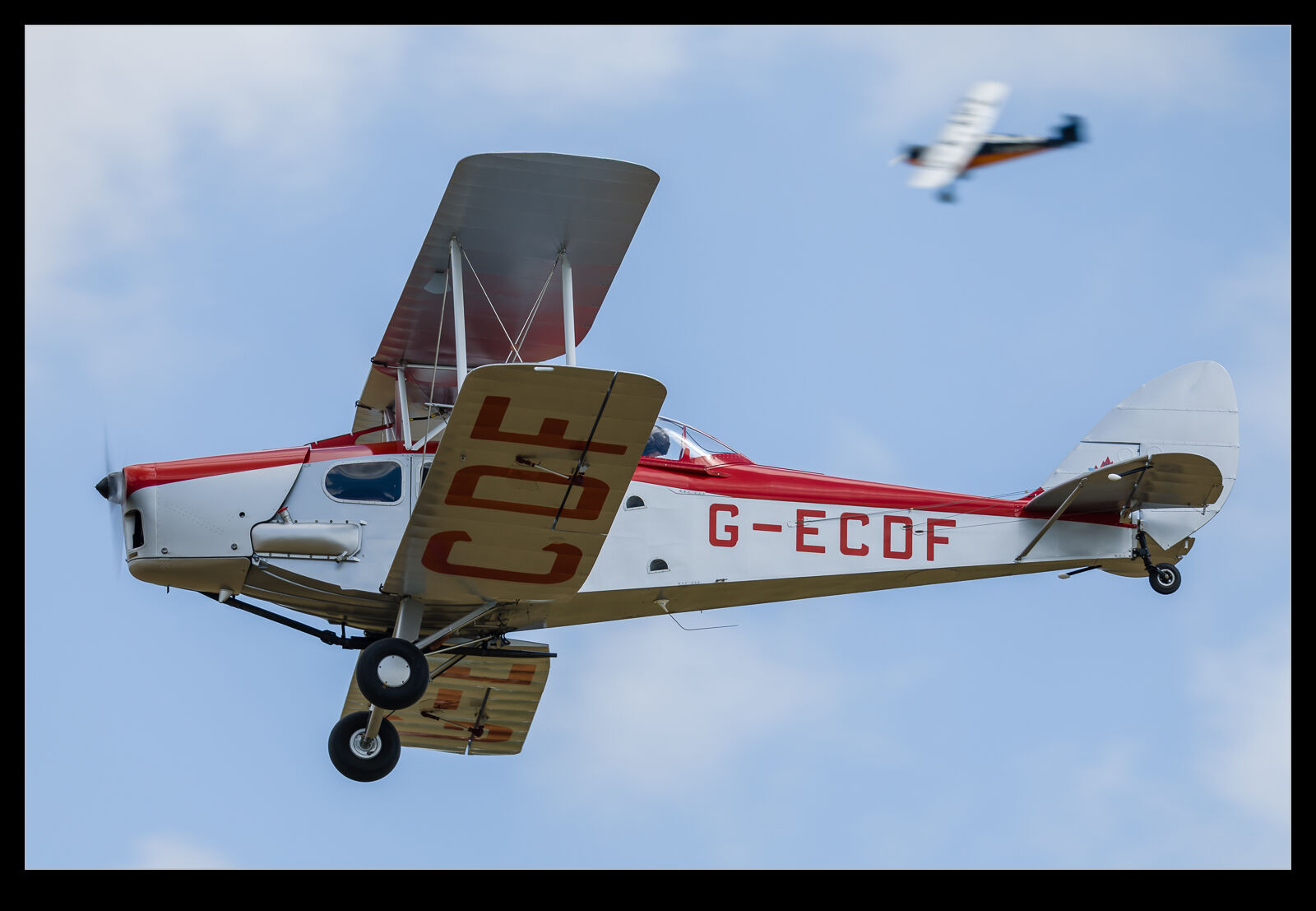 There have been a few posts of specific aircraft from the Shuttleworth’s Festival of Flight this summer. While those planes were of specific interest to me, there was an extensive display with many other types of planes taking part. Some of these were familiar types but some were new to me. This included variants of the de Havilland Moth family and an old Sopwith. I have run through the many shots I took that day and here is a selection of images of the displays although by no means a comprehensive one!
There have been a few posts of specific aircraft from the Shuttleworth’s Festival of Flight this summer. While those planes were of specific interest to me, there was an extensive display with many other types of planes taking part. Some of these were familiar types but some were new to me. This included variants of the de Havilland Moth family and an old Sopwith. I have run through the many shots I took that day and here is a selection of images of the displays although by no means a comprehensive one!
Windsor Castle from Above and Below
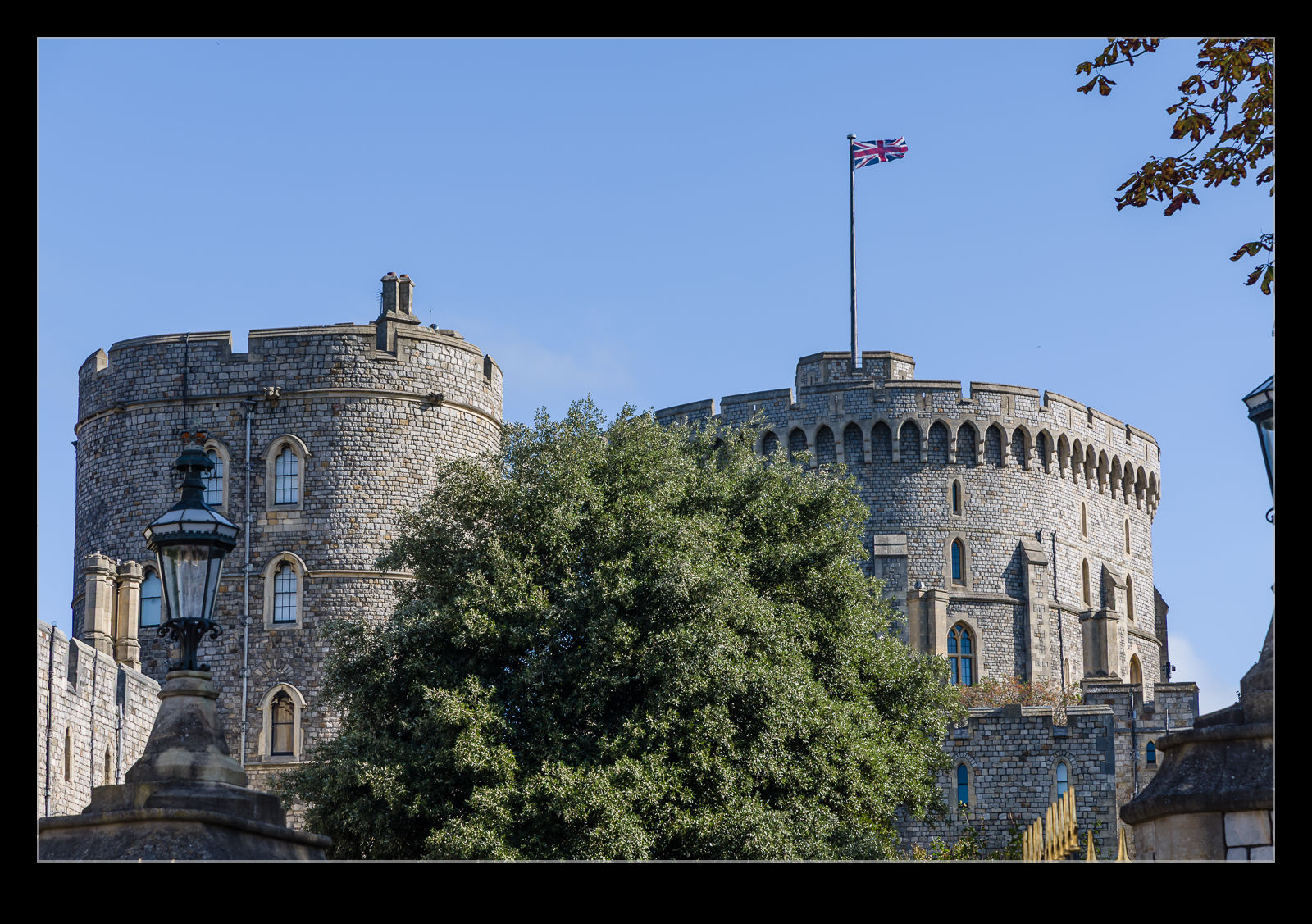 We took a visit to Windsor during the summer. The town centre is dominated by the castle, so I was bound to get some photos of it while we were walking around. Because you are so close to it, it is hard to get a feel for the whole thing. The view from out in the Great Park gives you a better understanding but I will save that for another post.
We took a visit to Windsor during the summer. The town centre is dominated by the castle, so I was bound to get some photos of it while we were walking around. Because you are so close to it, it is hard to get a feel for the whole thing. The view from out in the Great Park gives you a better understanding but I will save that for another post.
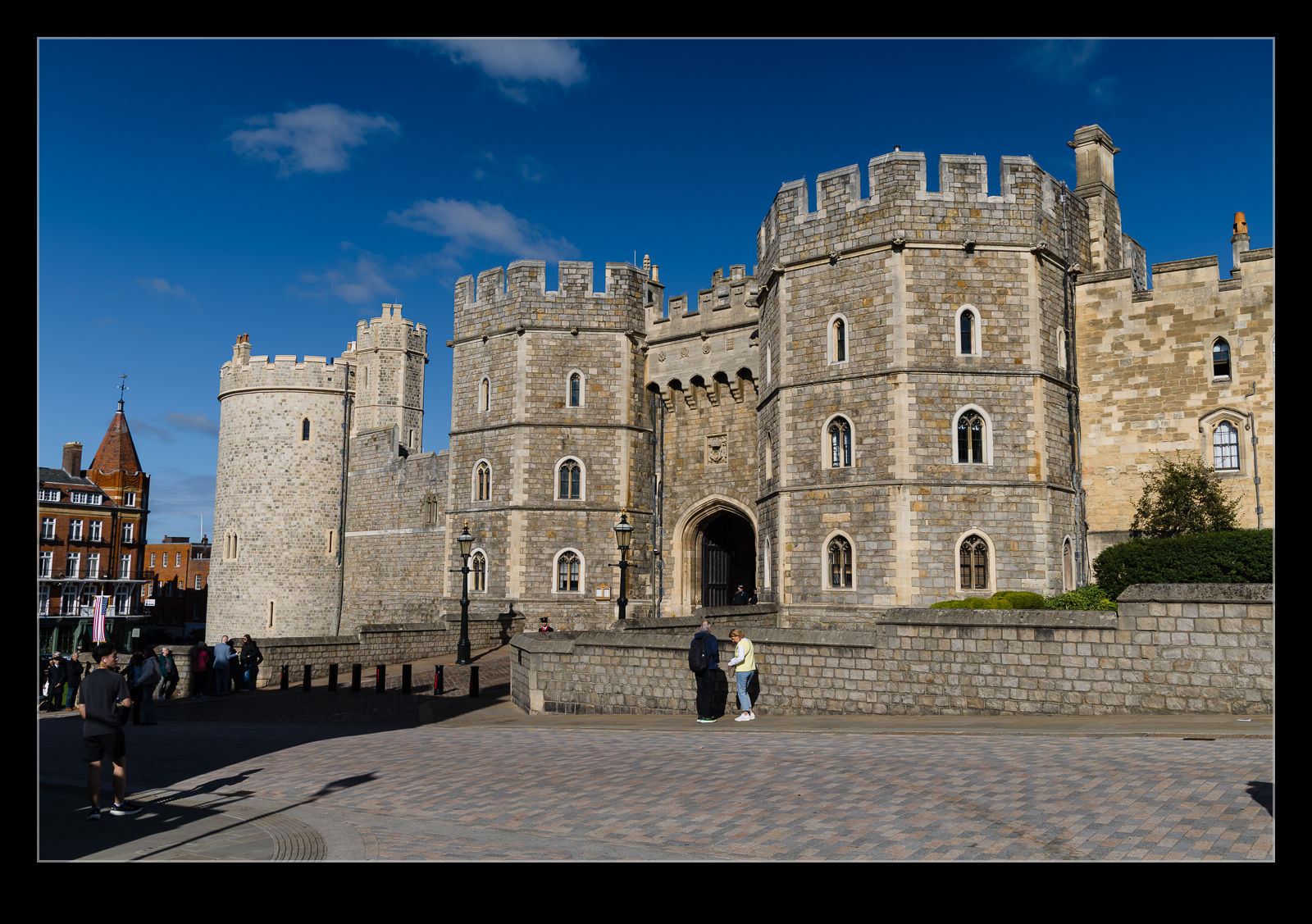 However, I did fly over the castle while on approach to Heathrow while returning from my travels. The approach path was just above the castle and my view of it was rather tight with the windows of the A320 not providing the best clarity. However, the view from above does let you see the whole castle.
However, I did fly over the castle while on approach to Heathrow while returning from my travels. The approach path was just above the castle and my view of it was rather tight with the windows of the A320 not providing the best clarity. However, the view from above does let you see the whole castle.
Wimbledon Special Emirates Climbing Out of Manchester
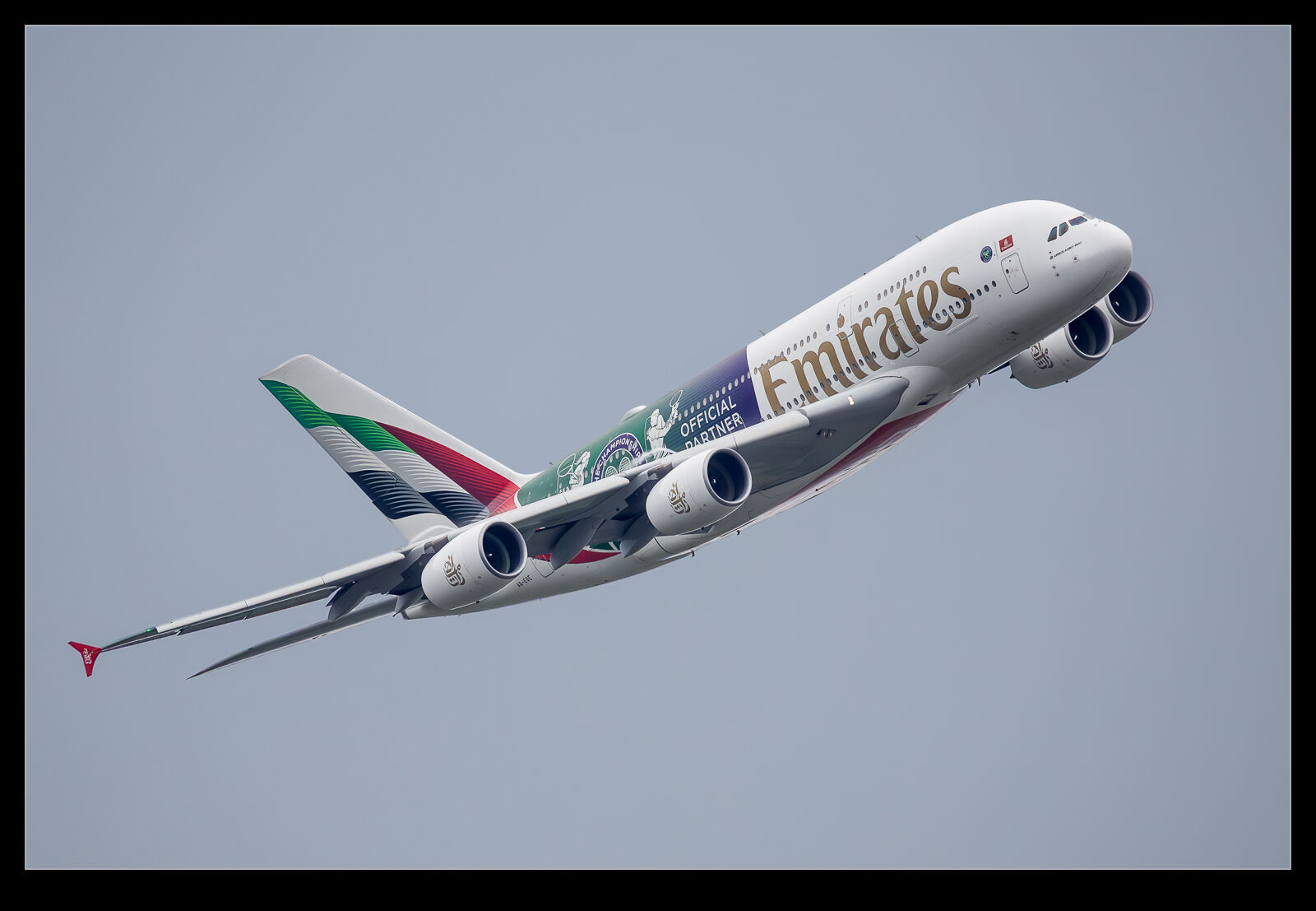 We were walking through the grounds of Tatton Park on a recent visit and I was carrying a long lens with me to be ready for the deer that roam the park. However, that was also handy given that the airliners climbing out of Manchester Airport came near us. The conditions were not good for plane photography to be honest. The clouds were often low enough that we never saw the planes but, at one point, I did get a good view of an Emirates A380 climbing overhead and turning in our direction. It had the new Emirates livery combined with special markings for Wimbledon’s tournament earlier this year. A bit of processing was necessary to get it to a reasonable shape.
We were walking through the grounds of Tatton Park on a recent visit and I was carrying a long lens with me to be ready for the deer that roam the park. However, that was also handy given that the airliners climbing out of Manchester Airport came near us. The conditions were not good for plane photography to be honest. The clouds were often low enough that we never saw the planes but, at one point, I did get a good view of an Emirates A380 climbing overhead and turning in our direction. It had the new Emirates livery combined with special markings for Wimbledon’s tournament earlier this year. A bit of processing was necessary to get it to a reasonable shape.
No Low Flying in These Valleys Today
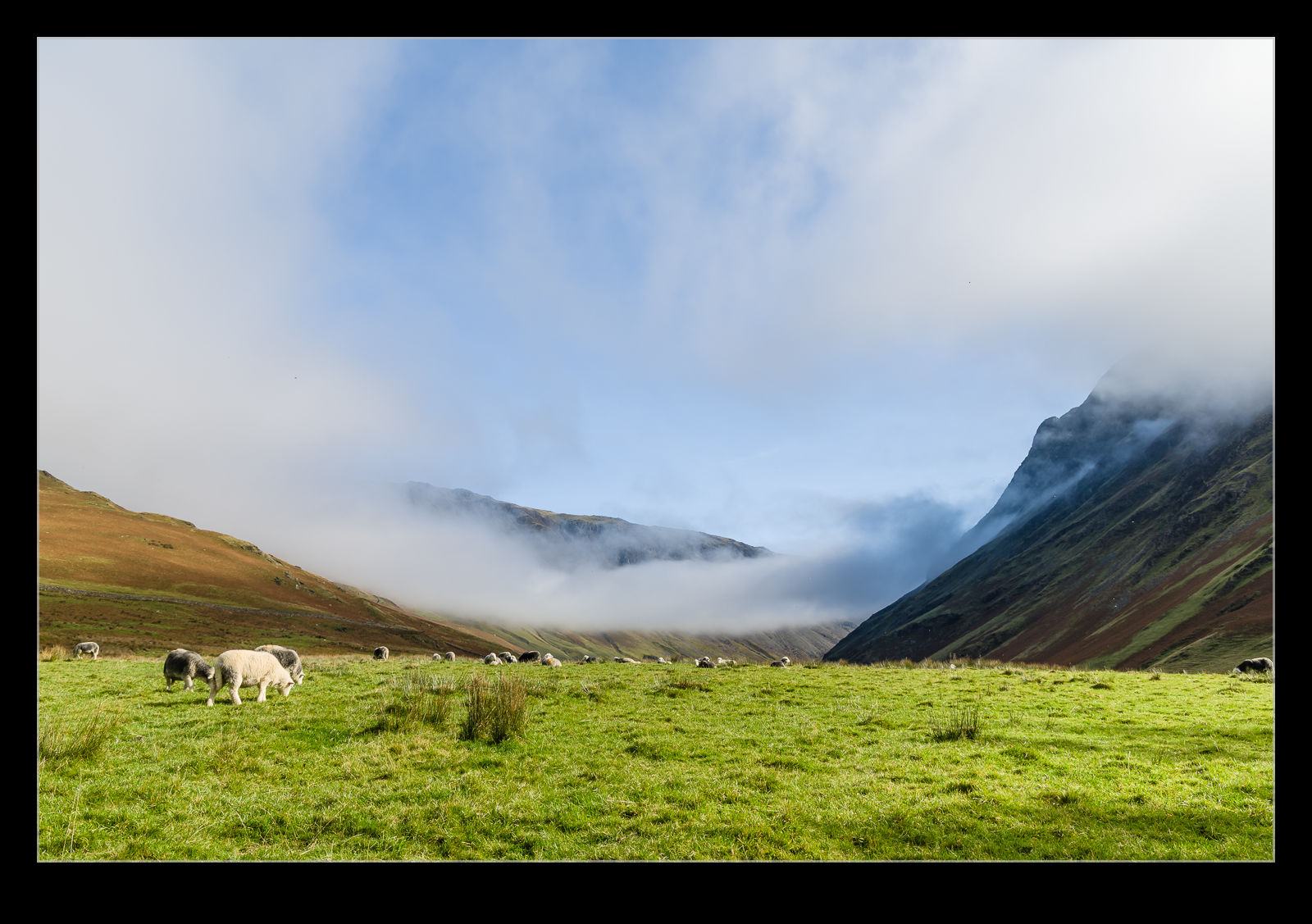 There were a couple of days while we were in the Lake District when the weather was misty. In some places, it burned off as the day warmed up but in others it lingered. The Lakes can be a popular place for low level flying by military jets but, when the mist stays, there is not going to be sufficient visibility to get down low and fast. While I might have liked to have some planes come through, the contrast with the lower parts of the valleys in the clear with the mist on the hills around was very appealing.
There were a couple of days while we were in the Lake District when the weather was misty. In some places, it burned off as the day warmed up but in others it lingered. The Lakes can be a popular place for low level flying by military jets but, when the mist stays, there is not going to be sufficient visibility to get down low and fast. While I might have liked to have some planes come through, the contrast with the lower parts of the valleys in the clear with the mist on the hills around was very appealing.
Glasgow Airport Brings Some Variety (At Least for Me)
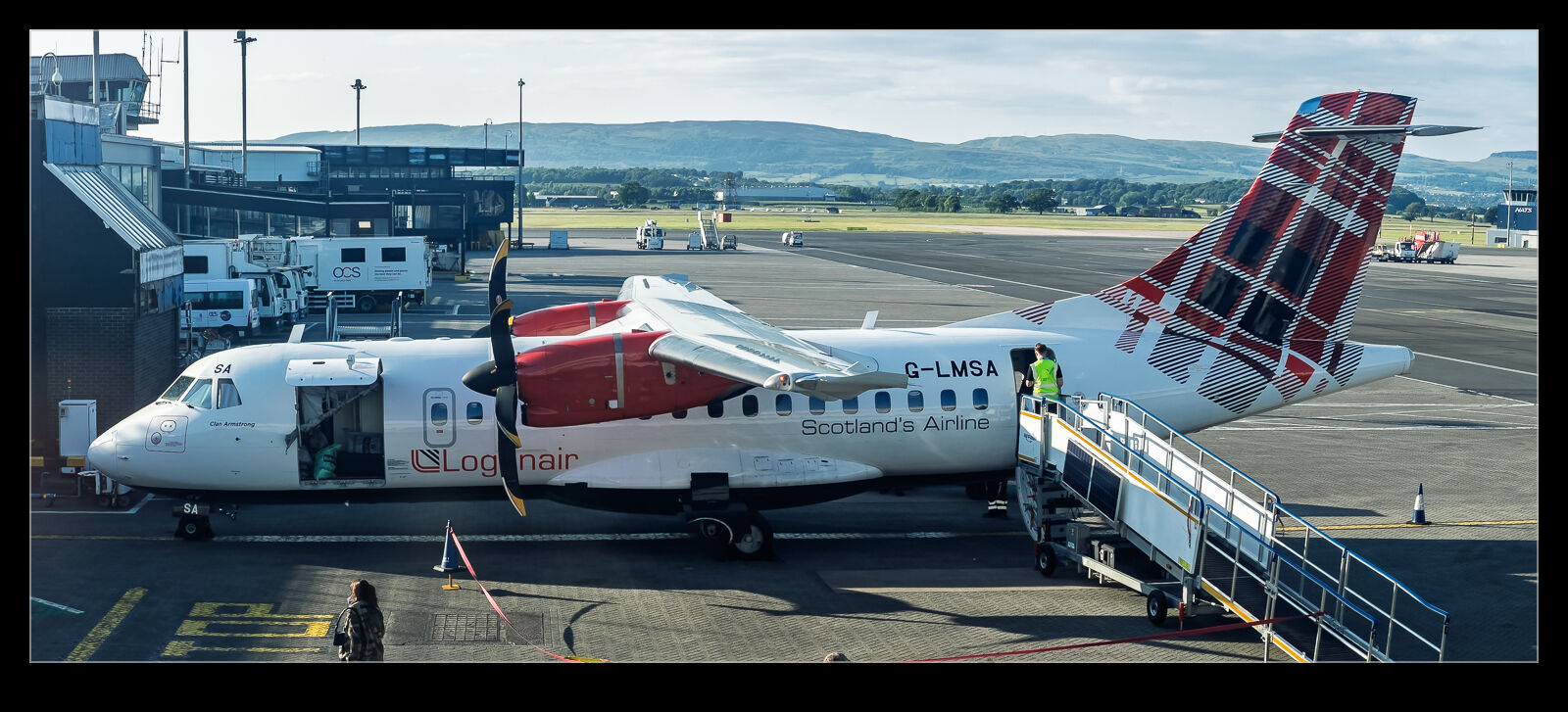 I have had to make a few trips to Glasgow recently and, while some of them involved the train up, I did also fly on occasion. This meant I had some time at Glasgow Airport waiting for my flight home. British Airways and EasyJet are regular features at Glasgow so nothing new about them. However, you get some visitors from Europe and Loganair has a number of turboprops based there so this was a nice chance to see something different to the norm (although I get plenty of ATRs passing the house).
I have had to make a few trips to Glasgow recently and, while some of them involved the train up, I did also fly on occasion. This meant I had some time at Glasgow Airport waiting for my flight home. British Airways and EasyJet are regular features at Glasgow so nothing new about them. However, you get some visitors from Europe and Loganair has a number of turboprops based there so this was a nice chance to see something different to the norm (although I get plenty of ATRs passing the house).
Herdwick Sheep
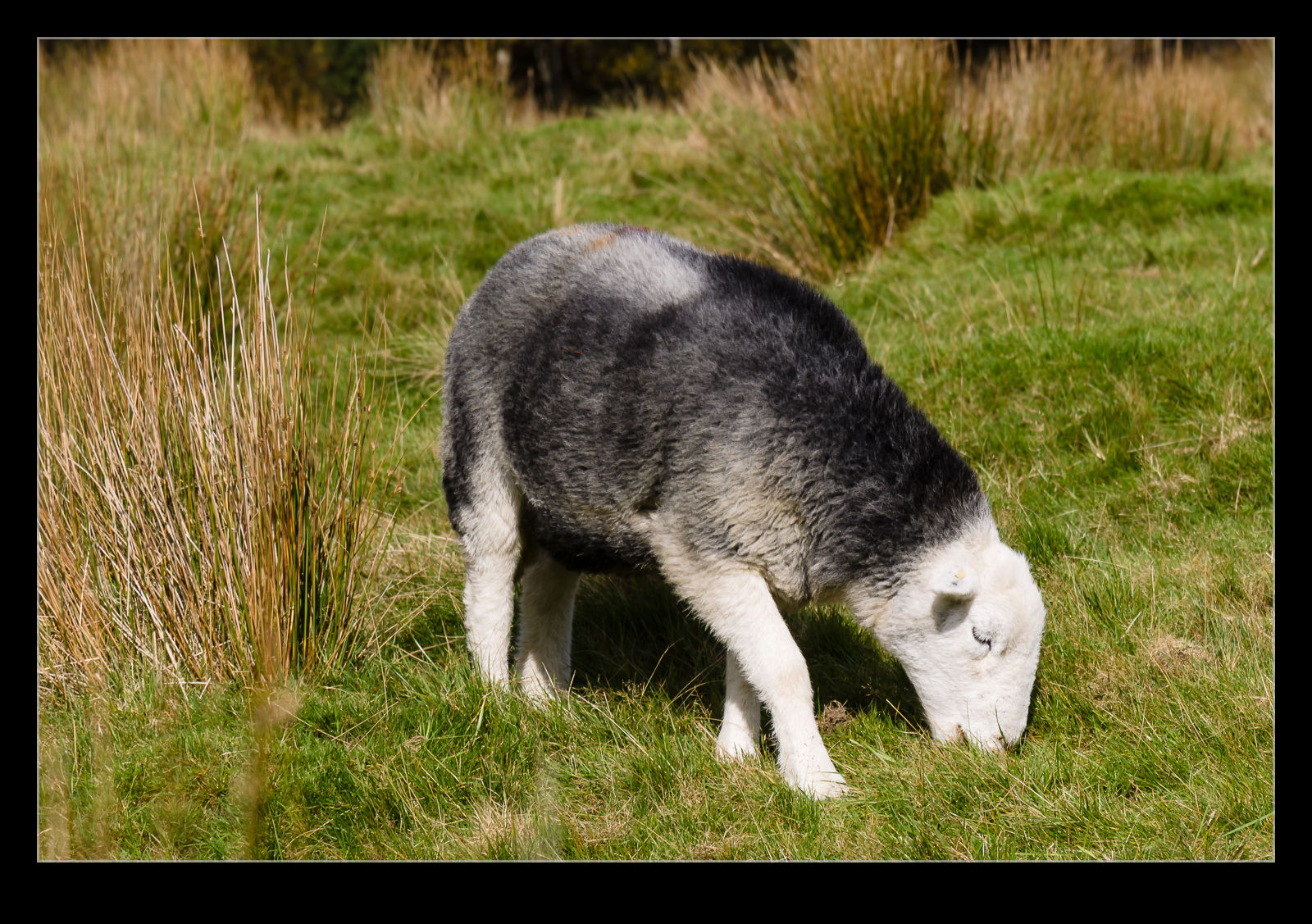 I wasn’t previously aware that there is a breed of sheep that is predominantly localised to the Lake District. These are Herdwick Sheep. They are well suited to the rugged terrain of the Lakes and can handle living in the exposed countryside throughout the year. They have quite a distinctive look and the colours of their fleeces are unusual. We saw plenty of them during our visit and I loved the different looks of them as they age. My favourite is when they are in the grey phase. I just thought they looked really interesting.
I wasn’t previously aware that there is a breed of sheep that is predominantly localised to the Lake District. These are Herdwick Sheep. They are well suited to the rugged terrain of the Lakes and can handle living in the exposed countryside throughout the year. They have quite a distinctive look and the colours of their fleeces are unusual. We saw plenty of them during our visit and I loved the different looks of them as they age. My favourite is when they are in the grey phase. I just thought they looked really interesting.
What’s on This Azerbaijan 777’s Fuselage?
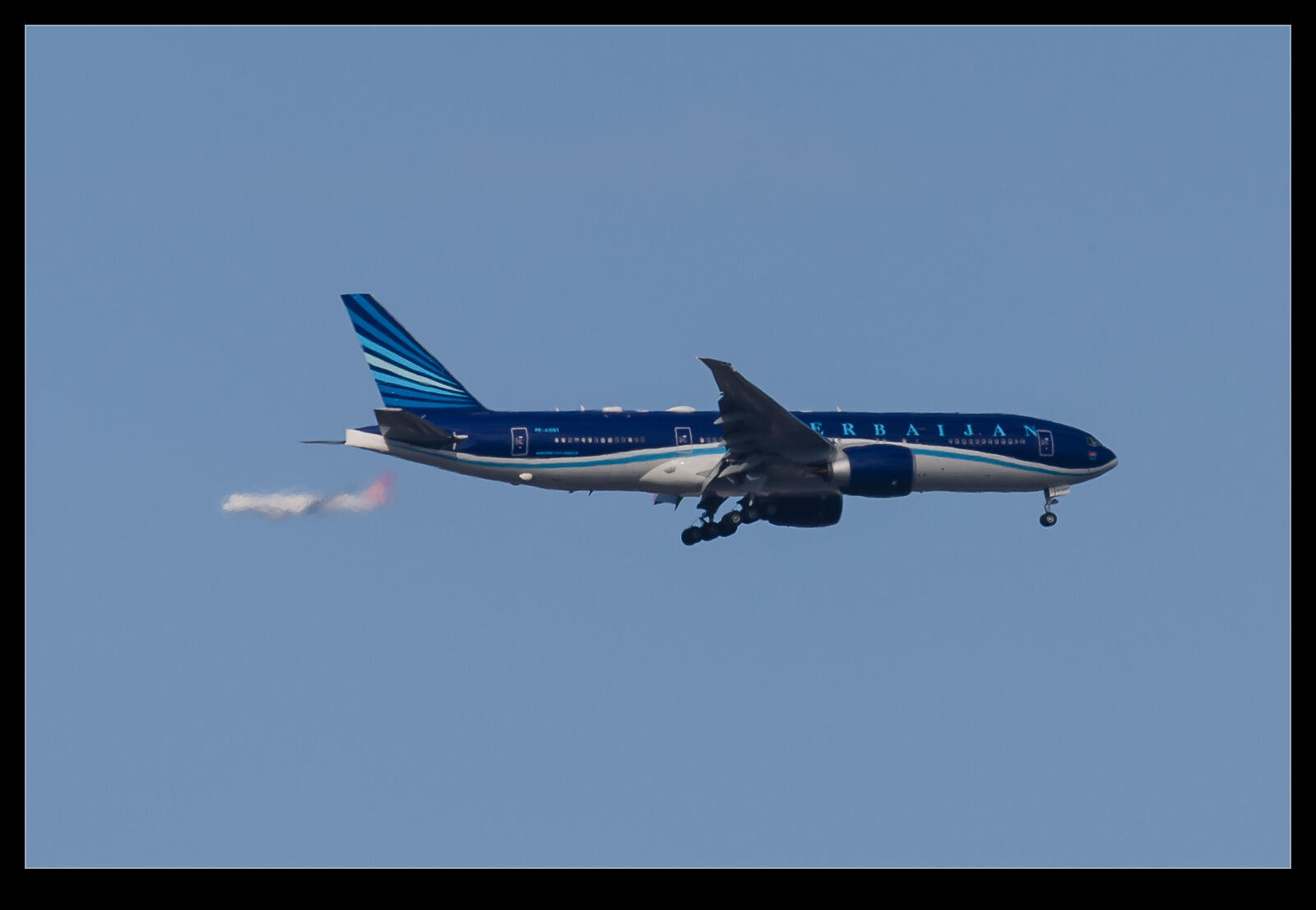 We had an excellent time walking through Windsor Great Park and, while I wasn’t there chasing aircraft, there were a few opportunities to get images of some of the arrivals into Heathrow in the distance. One of these was an Azerbaijan Boeing 777. I grabbed a couple of shots of it as it came over Windsor in the distance and then thought nothing further about it. However, when I started to look through my shots, I noticed some interesting lumps and bumps on the fuselage. My thoughts were immediately that they were some form of defensive countermeasures but if anyone has any other thoughts, I’d be interested to hear them.
We had an excellent time walking through Windsor Great Park and, while I wasn’t there chasing aircraft, there were a few opportunities to get images of some of the arrivals into Heathrow in the distance. One of these was an Azerbaijan Boeing 777. I grabbed a couple of shots of it as it came over Windsor in the distance and then thought nothing further about it. However, when I started to look through my shots, I noticed some interesting lumps and bumps on the fuselage. My thoughts were immediately that they were some form of defensive countermeasures but if anyone has any other thoughts, I’d be interested to hear them.
Wandering Through Trafalgar Square
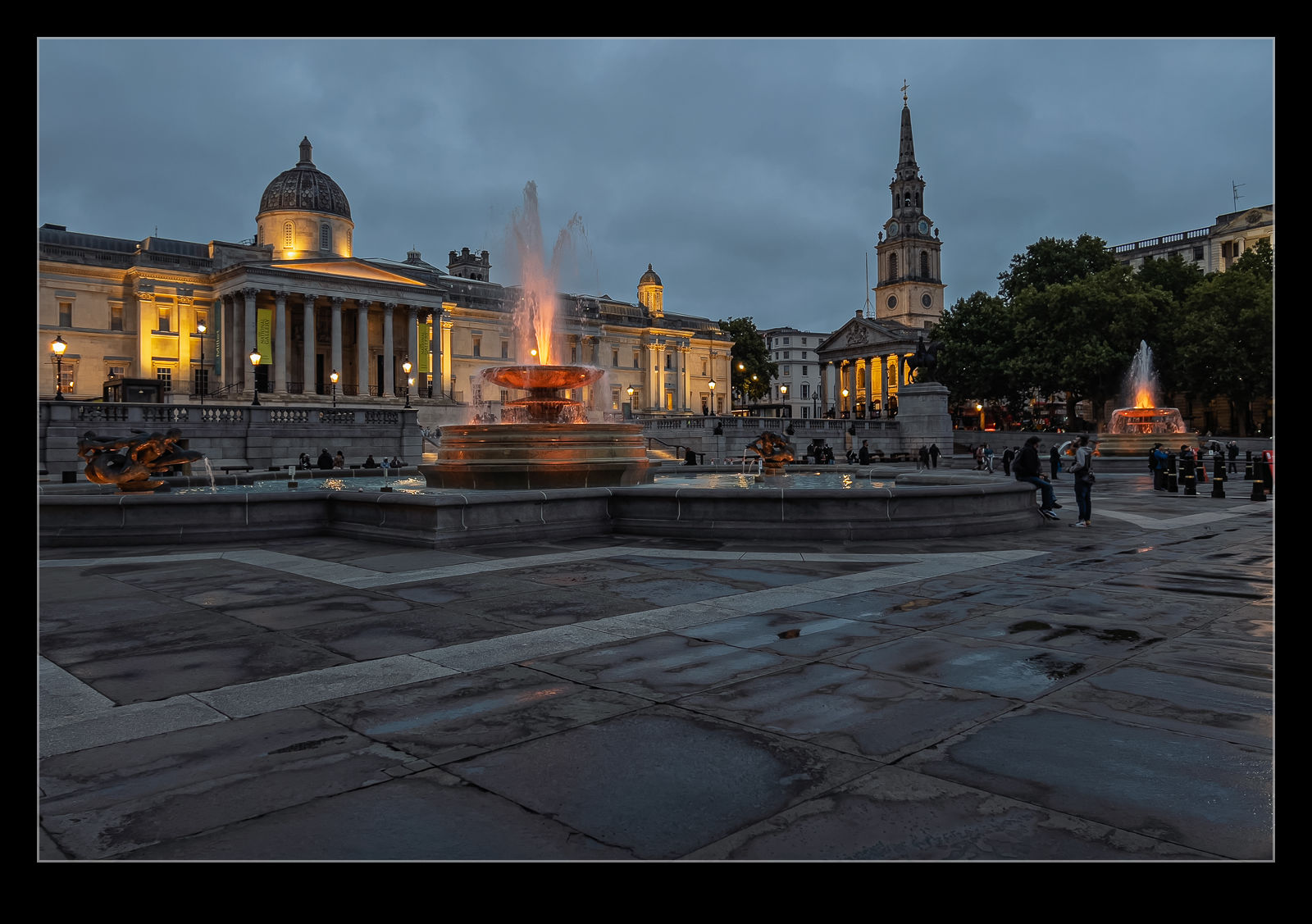 I had been meeting up with people for a drink in town after work one evening. Once we had gone our separate ways, I had time in hand to walk back to Waterloo for my train home. My route took me through Trafalgar Square and, in the oncoming darkness, the illumination of the National Gallery looked really nice and I couldn’t help but stop to get some images. Taking photos in London is a bit awkward because you don’t want to look like a tourist but sometimes you have to overcome the pride!
I had been meeting up with people for a drink in town after work one evening. Once we had gone our separate ways, I had time in hand to walk back to Waterloo for my train home. My route took me through Trafalgar Square and, in the oncoming darkness, the illumination of the National Gallery looked really nice and I couldn’t help but stop to get some images. Taking photos in London is a bit awkward because you don’t want to look like a tourist but sometimes you have to overcome the pride!
VC-10 Time
 Our visit to the Brooklands Museum meant were were at the home of the Vickers VC-10. The museum has a complete example along with another fuselage and some test items related to the development of the aircraft that was undertaken here. The complete airframe belonged to the Sultan of Oman and it was flown into Weybridge in the late 80s before the runway was rendered unavailable. It was quite a luxurious configuration in its day but does have a rather basic look compared to what might be available today.
Our visit to the Brooklands Museum meant were were at the home of the Vickers VC-10. The museum has a complete example along with another fuselage and some test items related to the development of the aircraft that was undertaken here. The complete airframe belonged to the Sultan of Oman and it was flown into Weybridge in the late 80s before the runway was rendered unavailable. It was quite a luxurious configuration in its day but does have a rather basic look compared to what might be available today.
